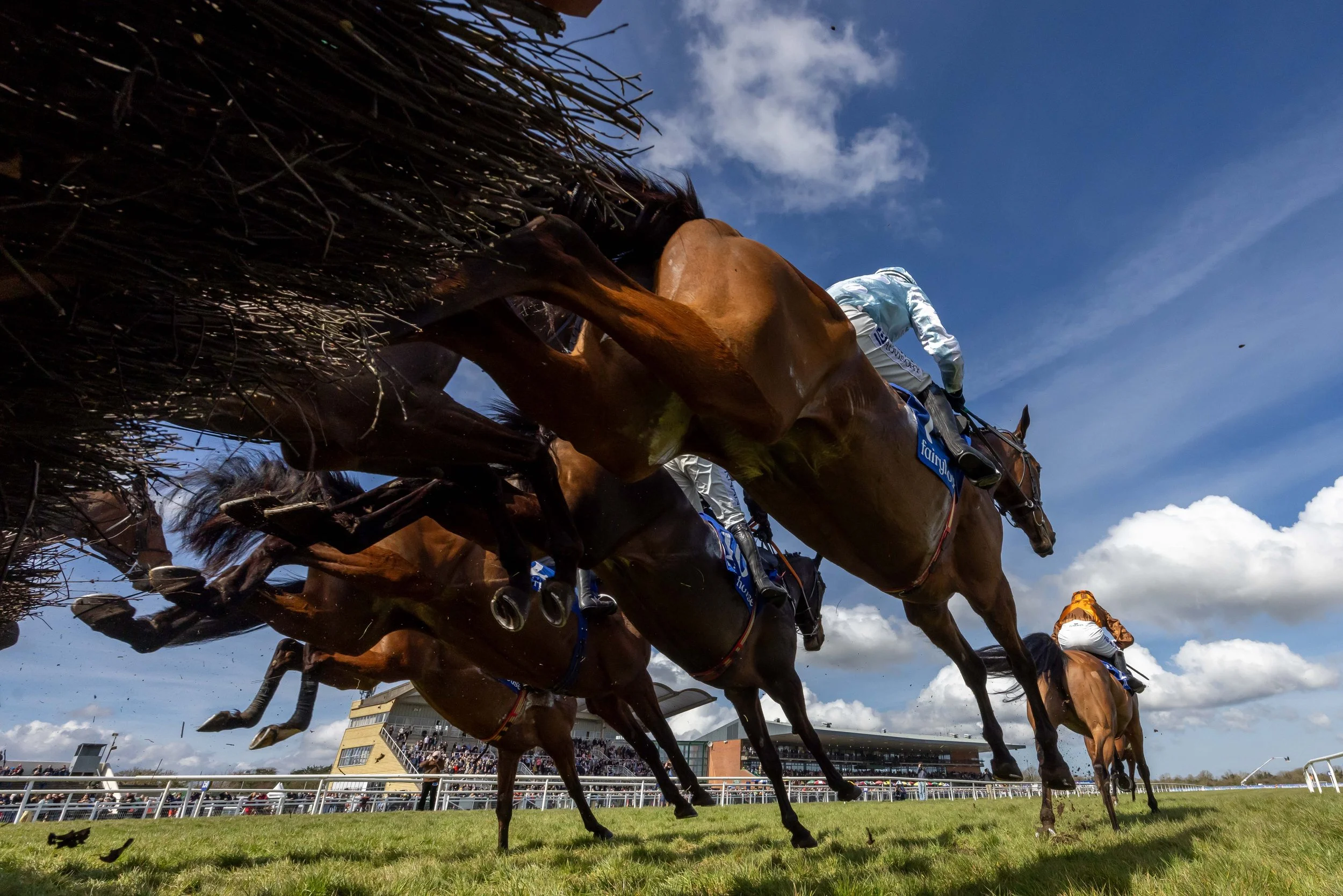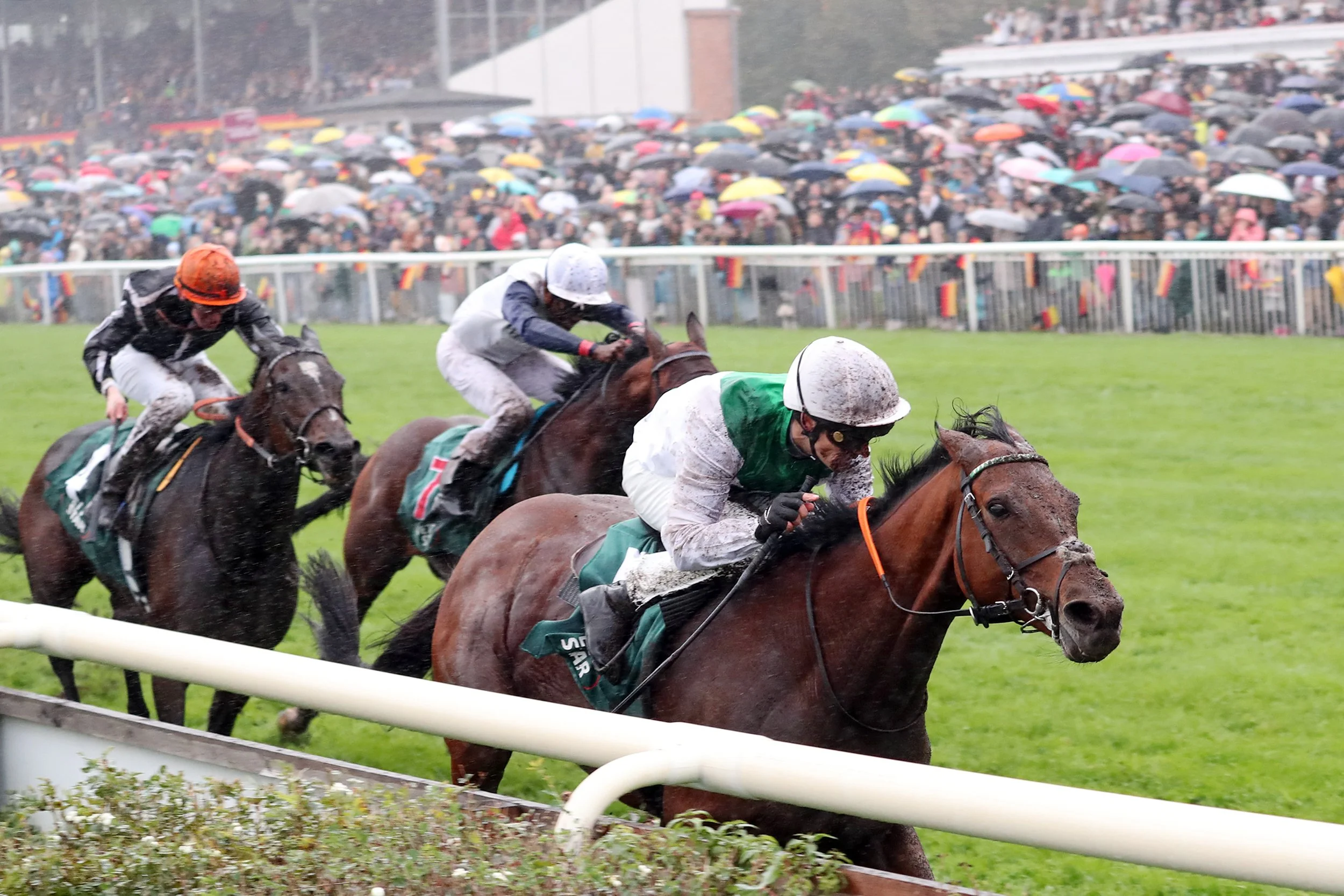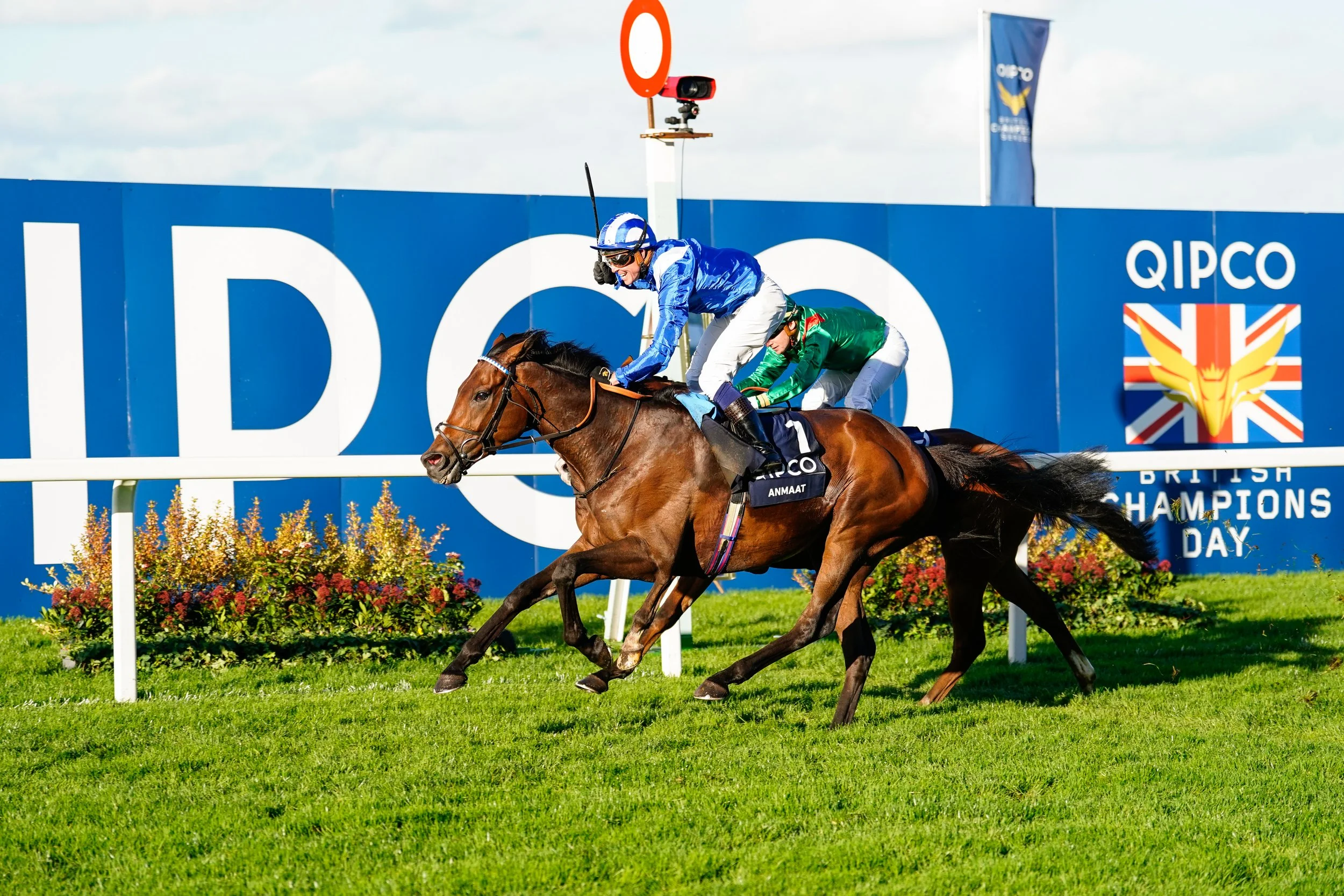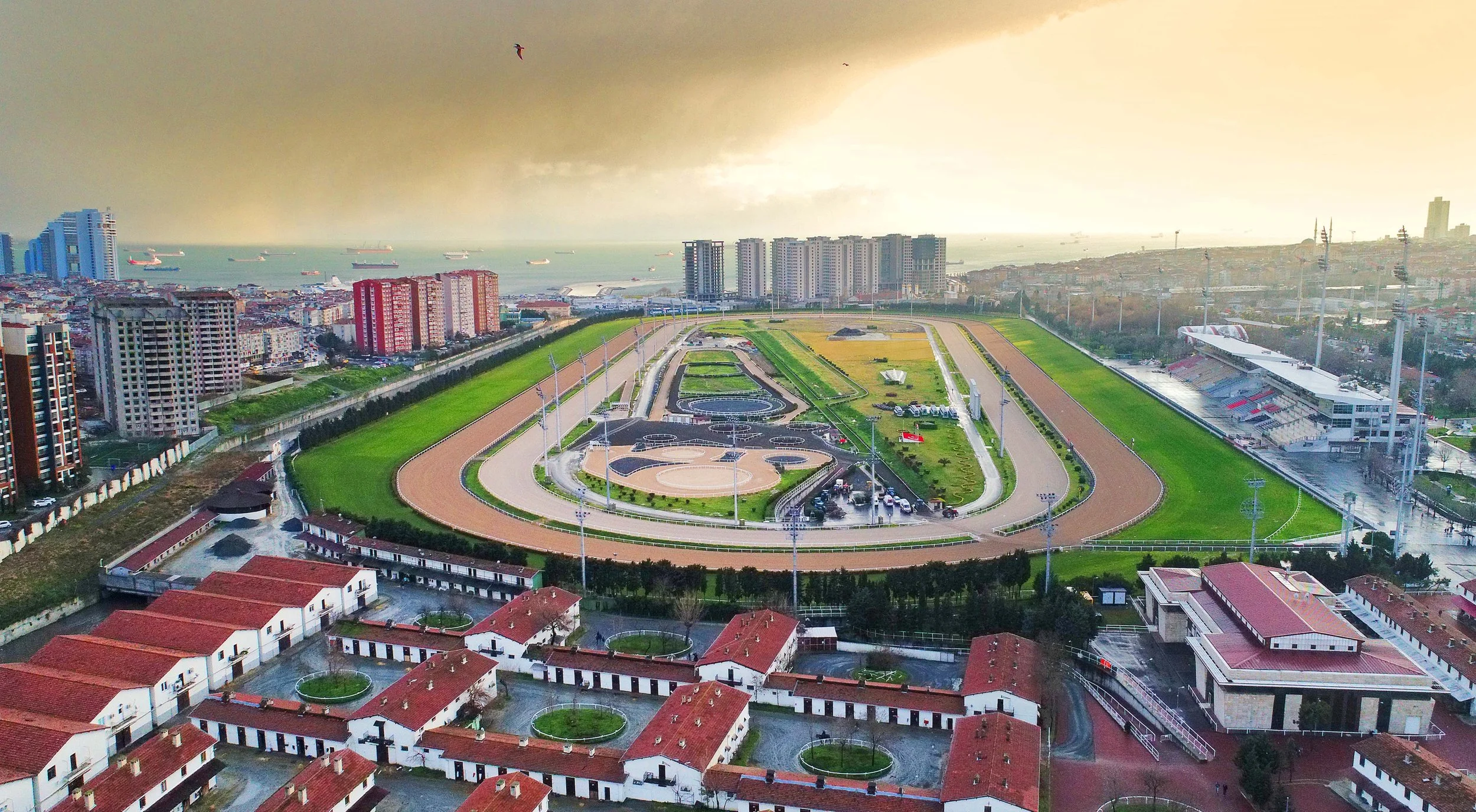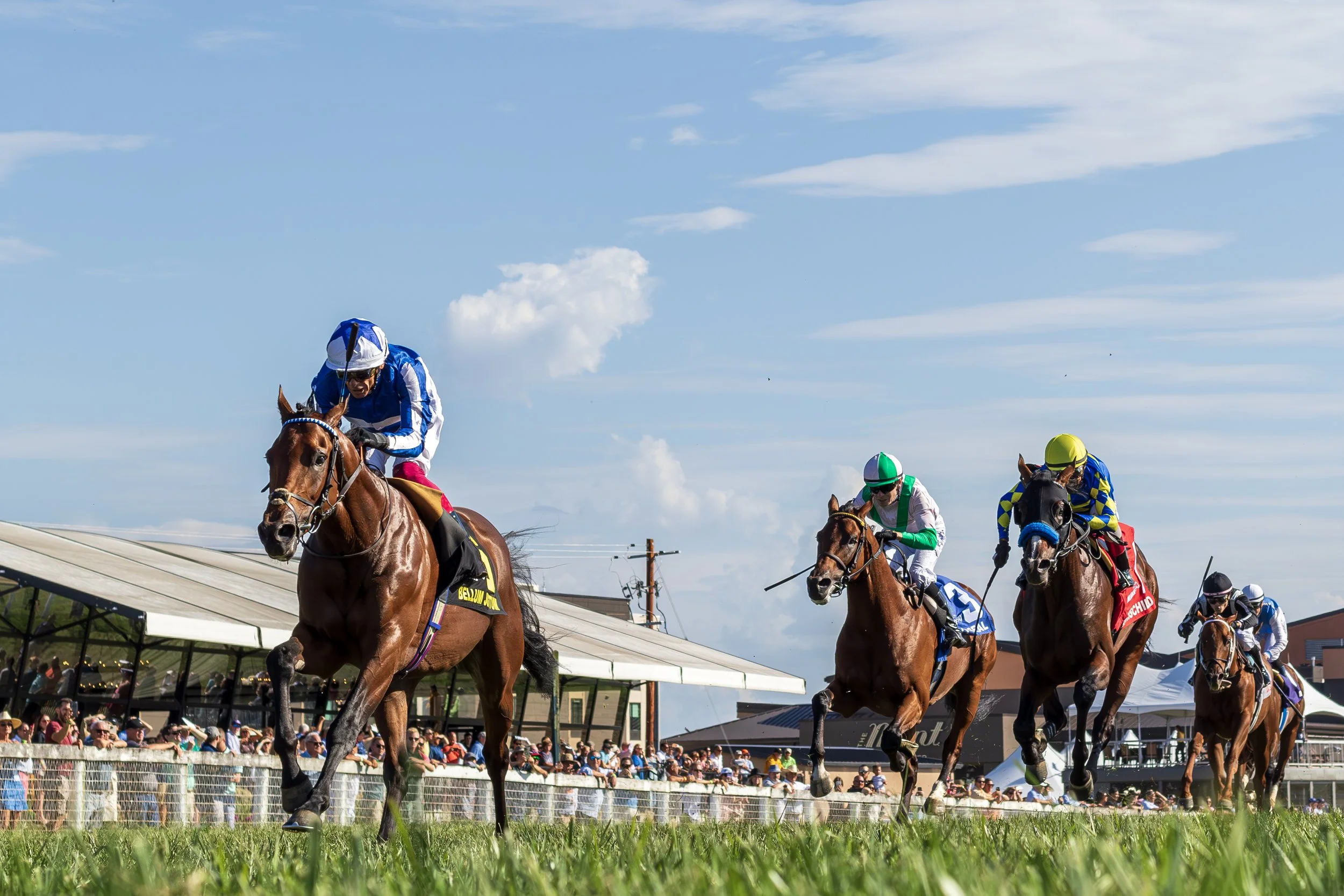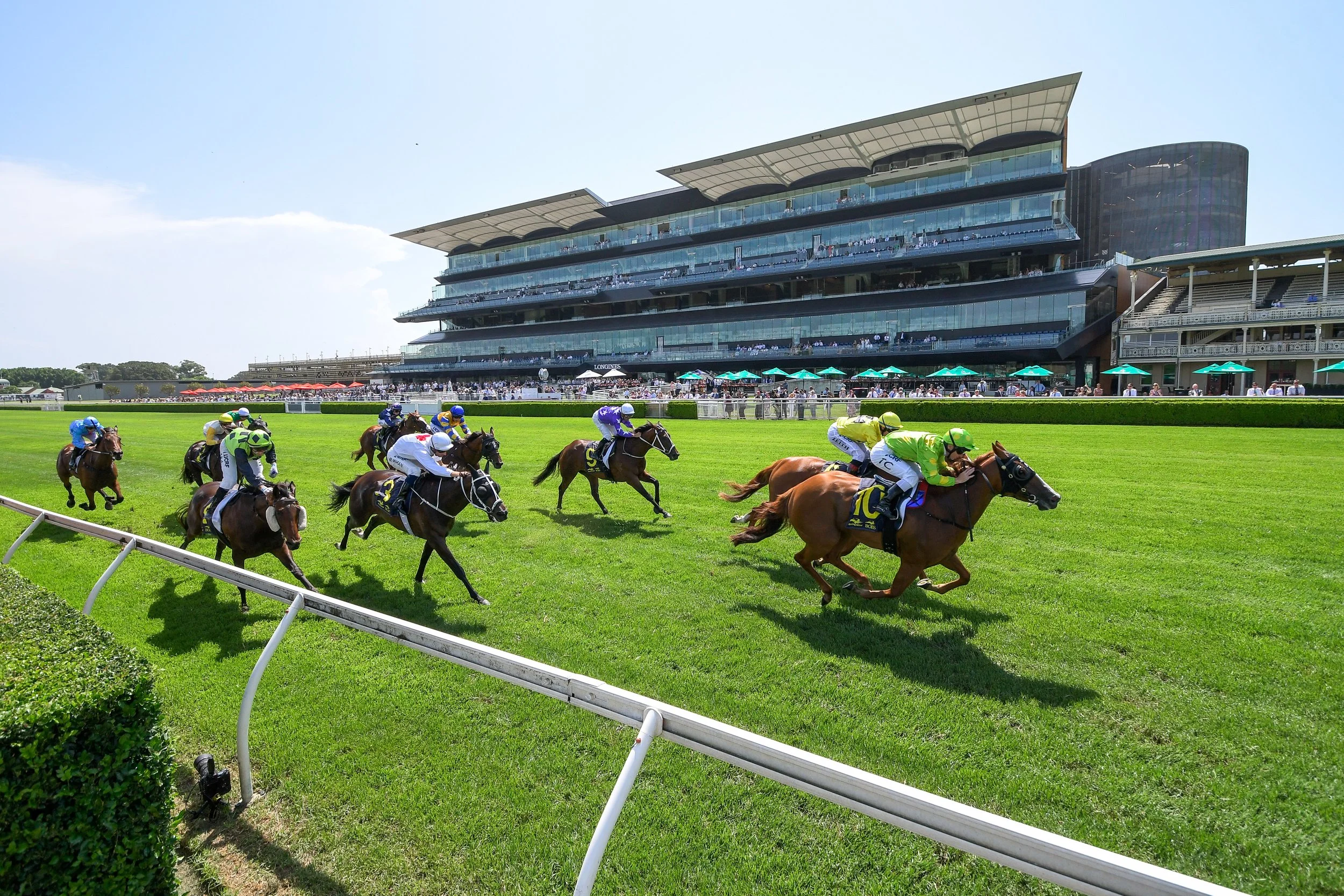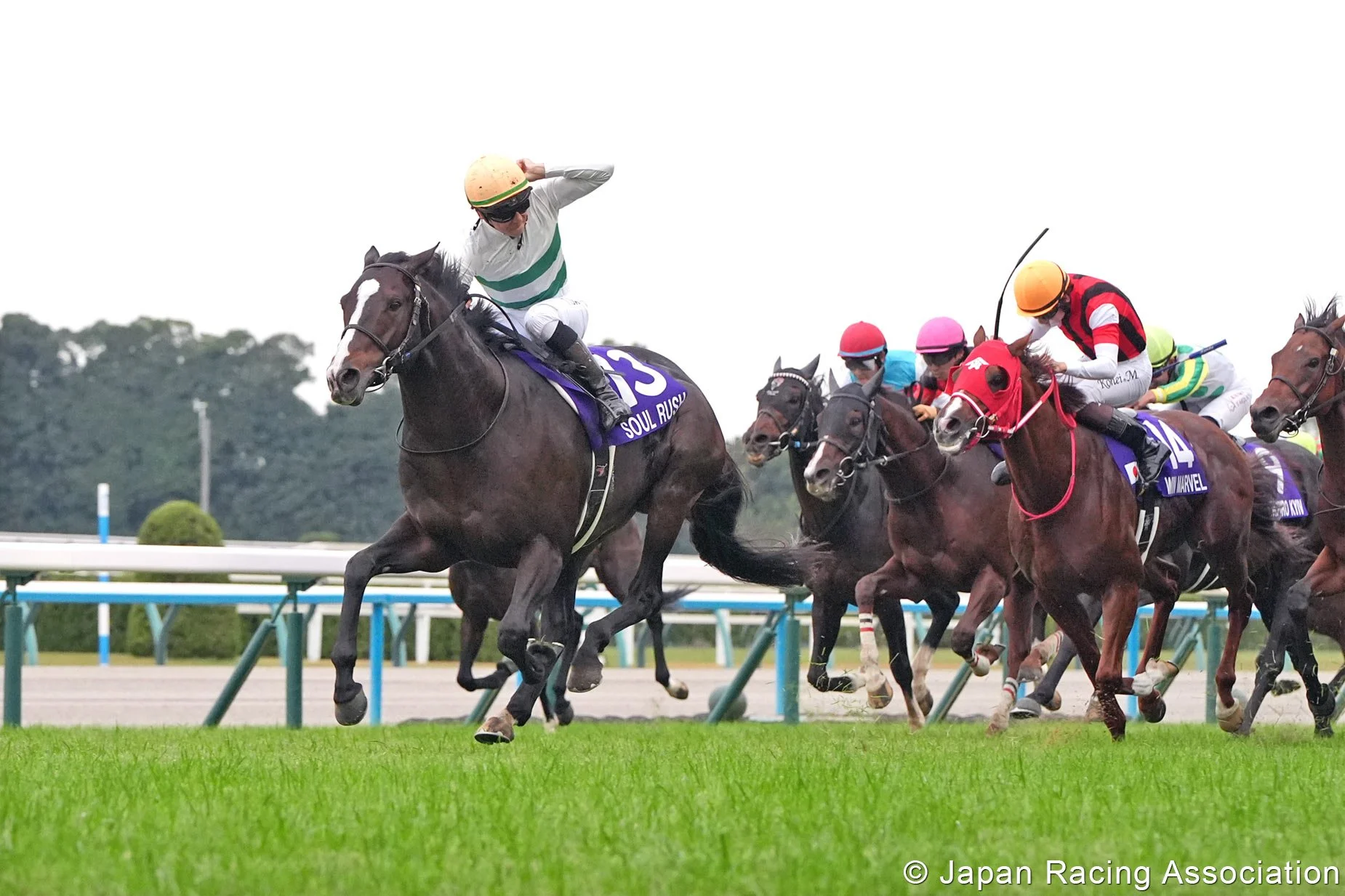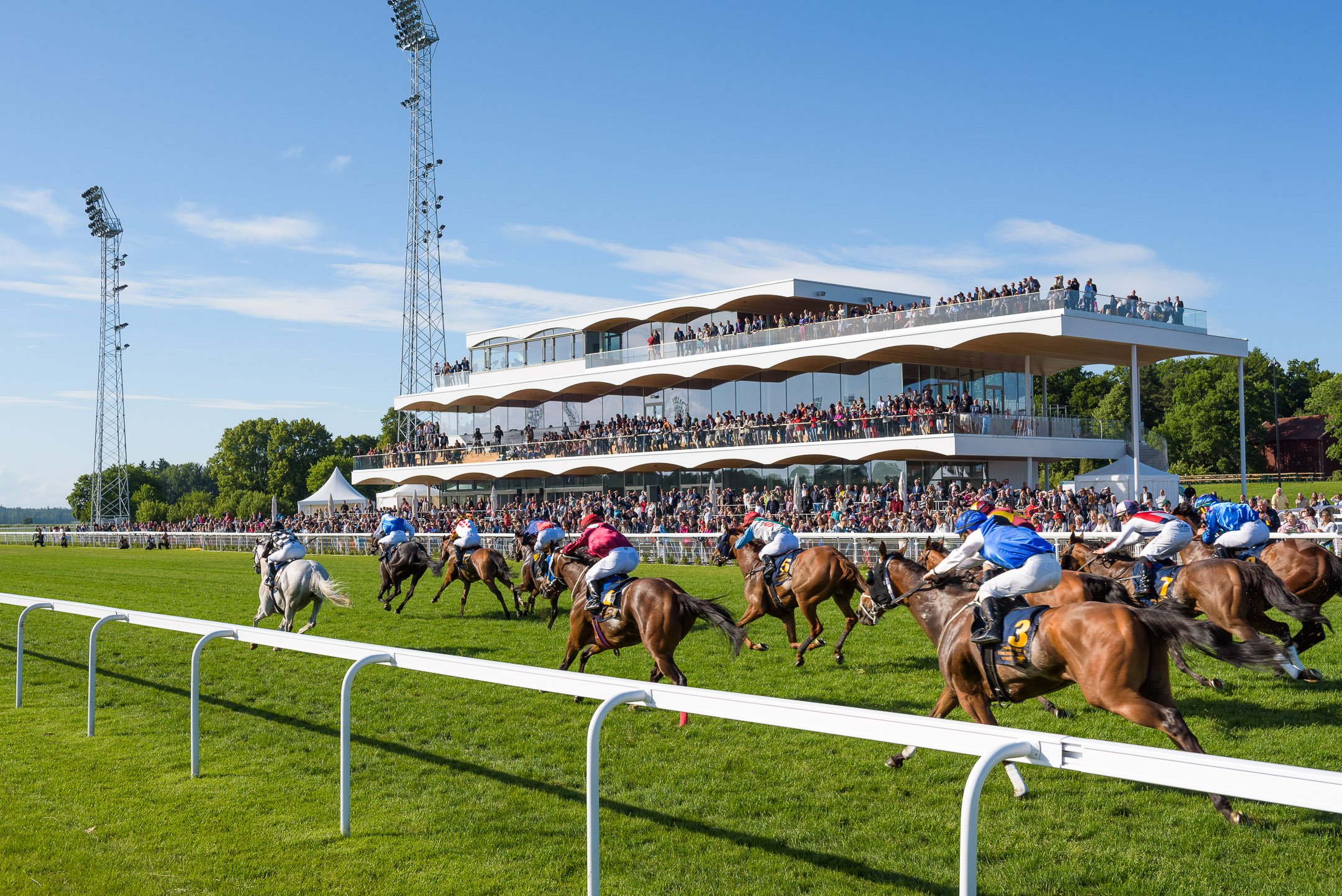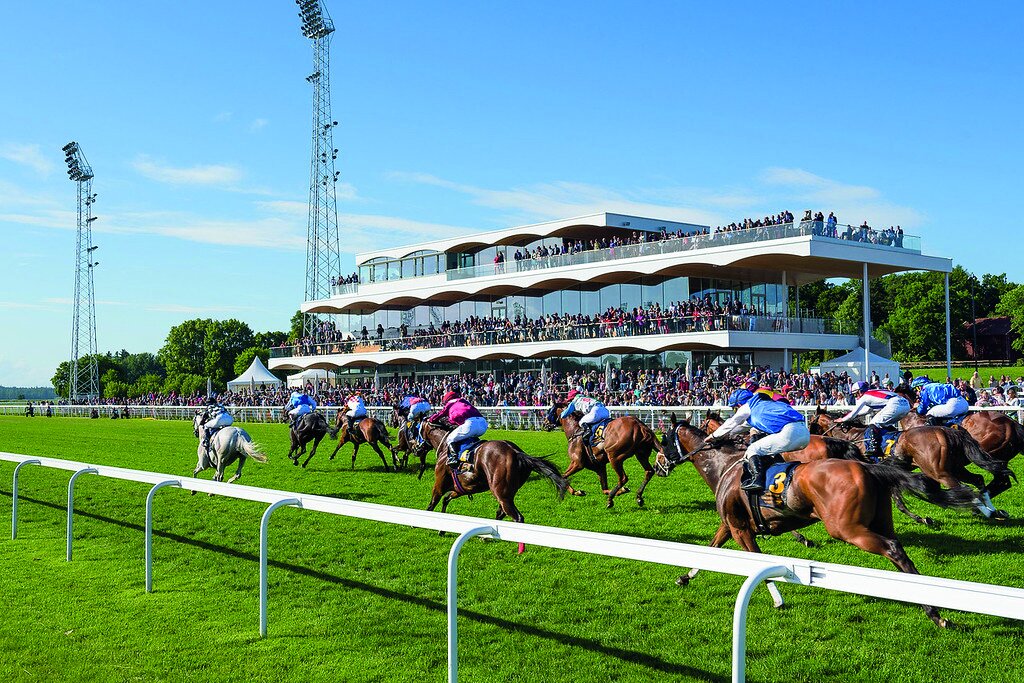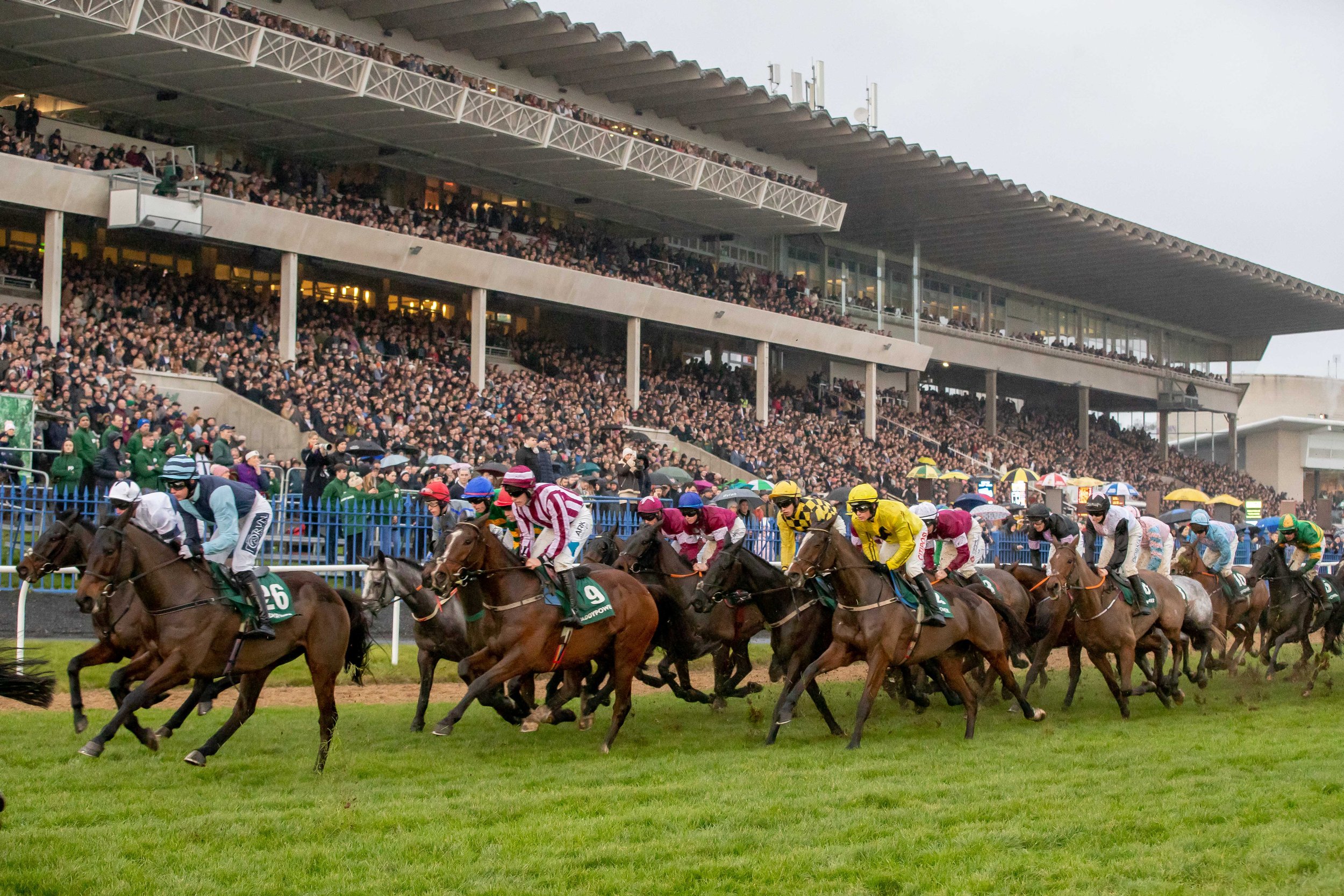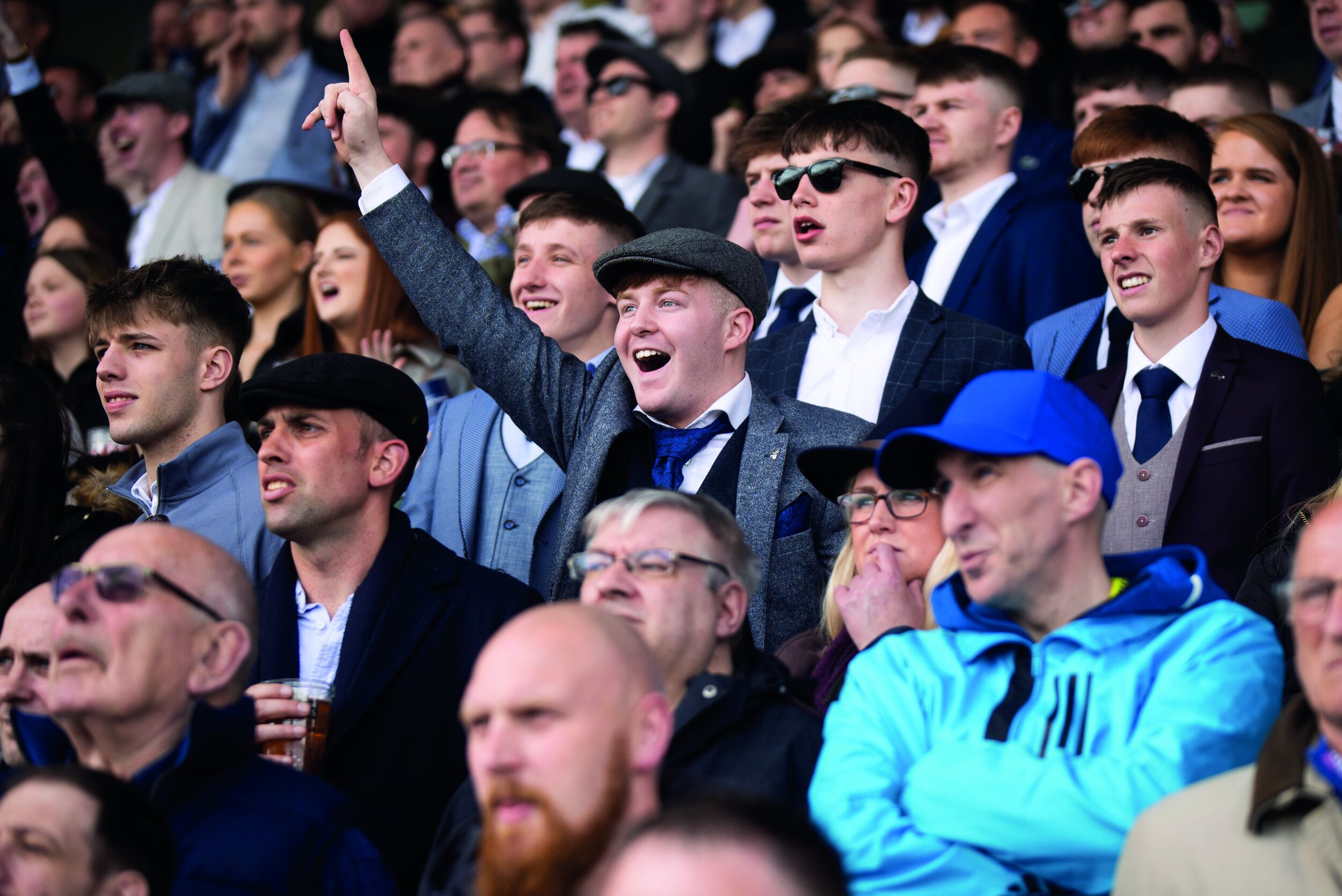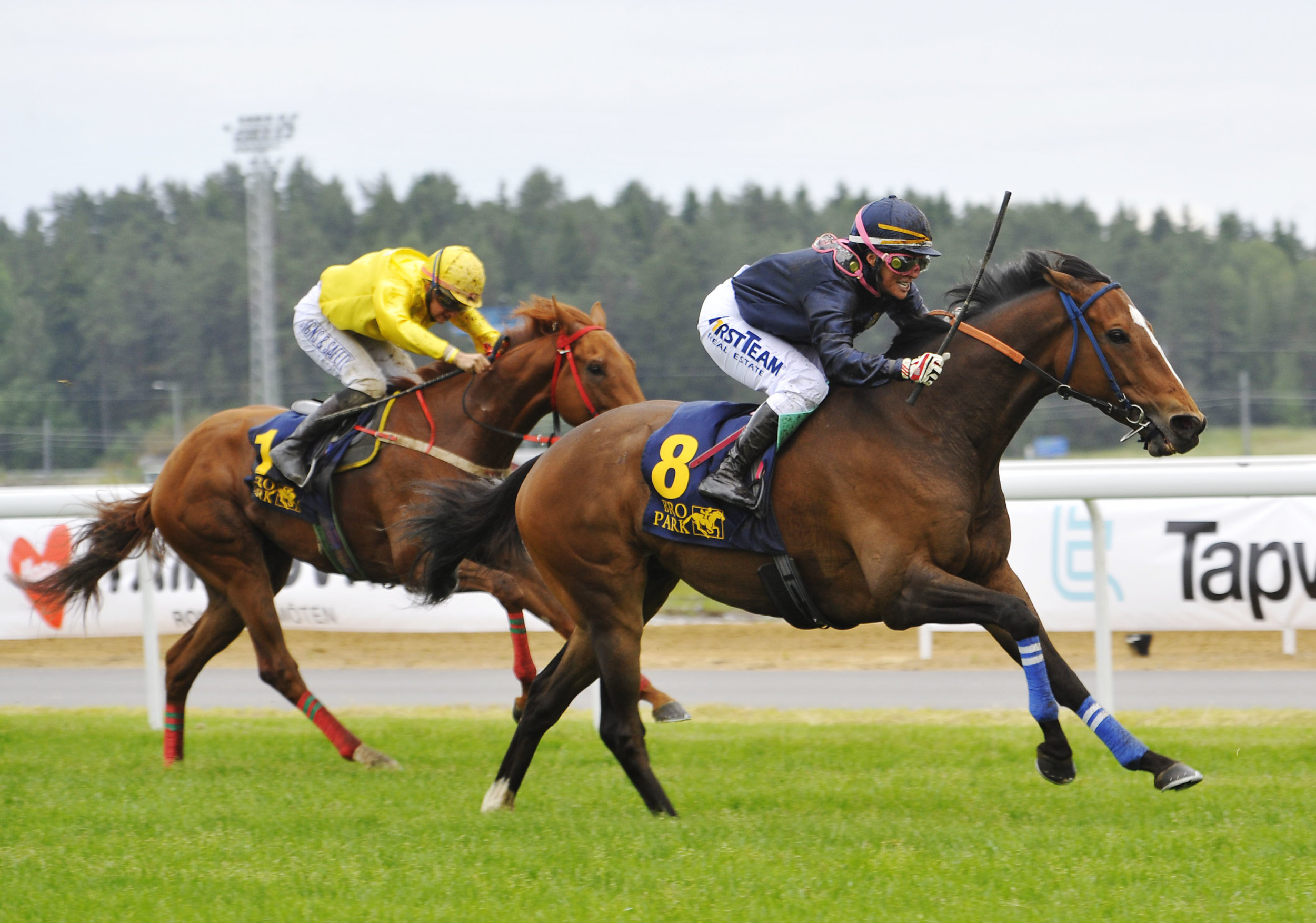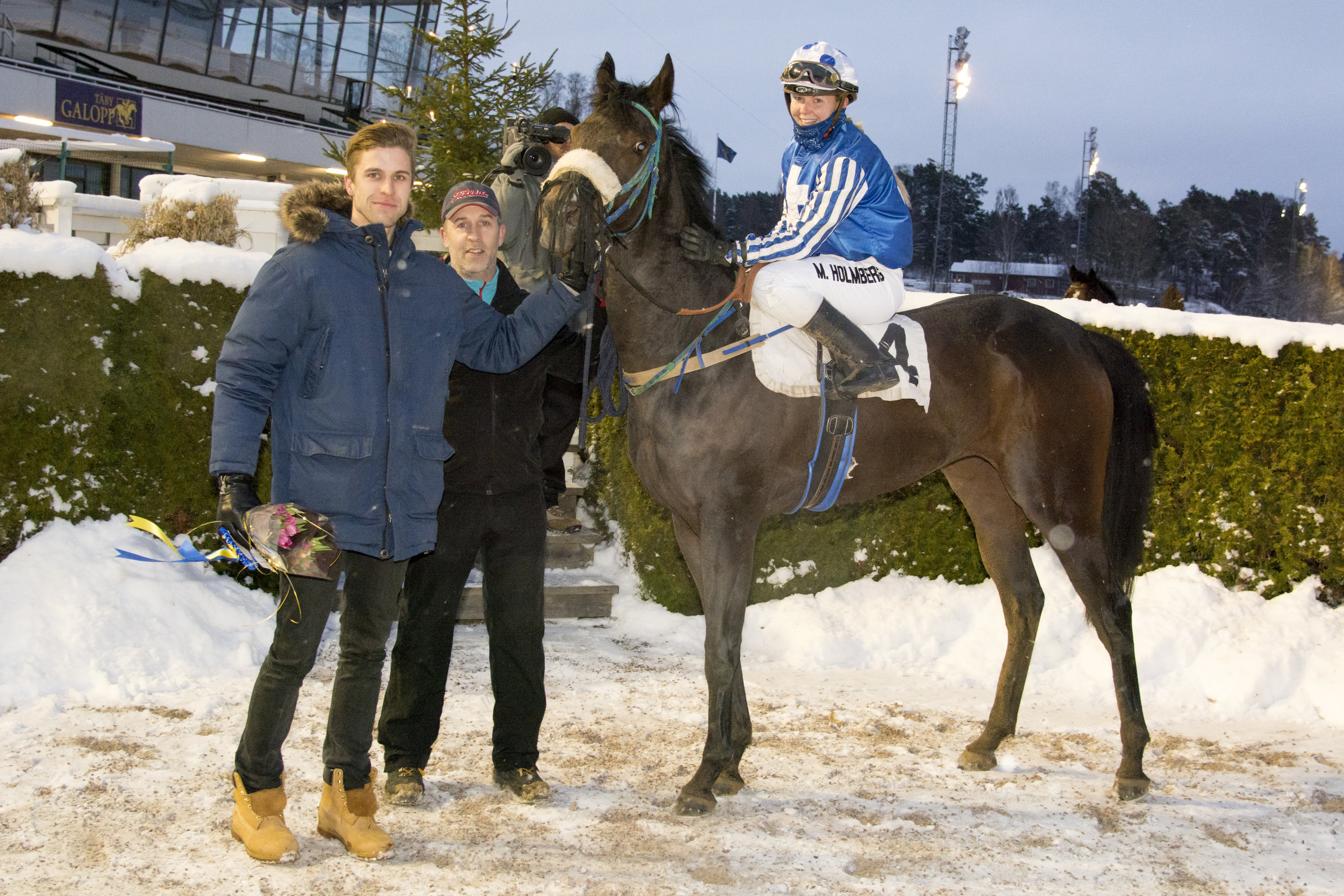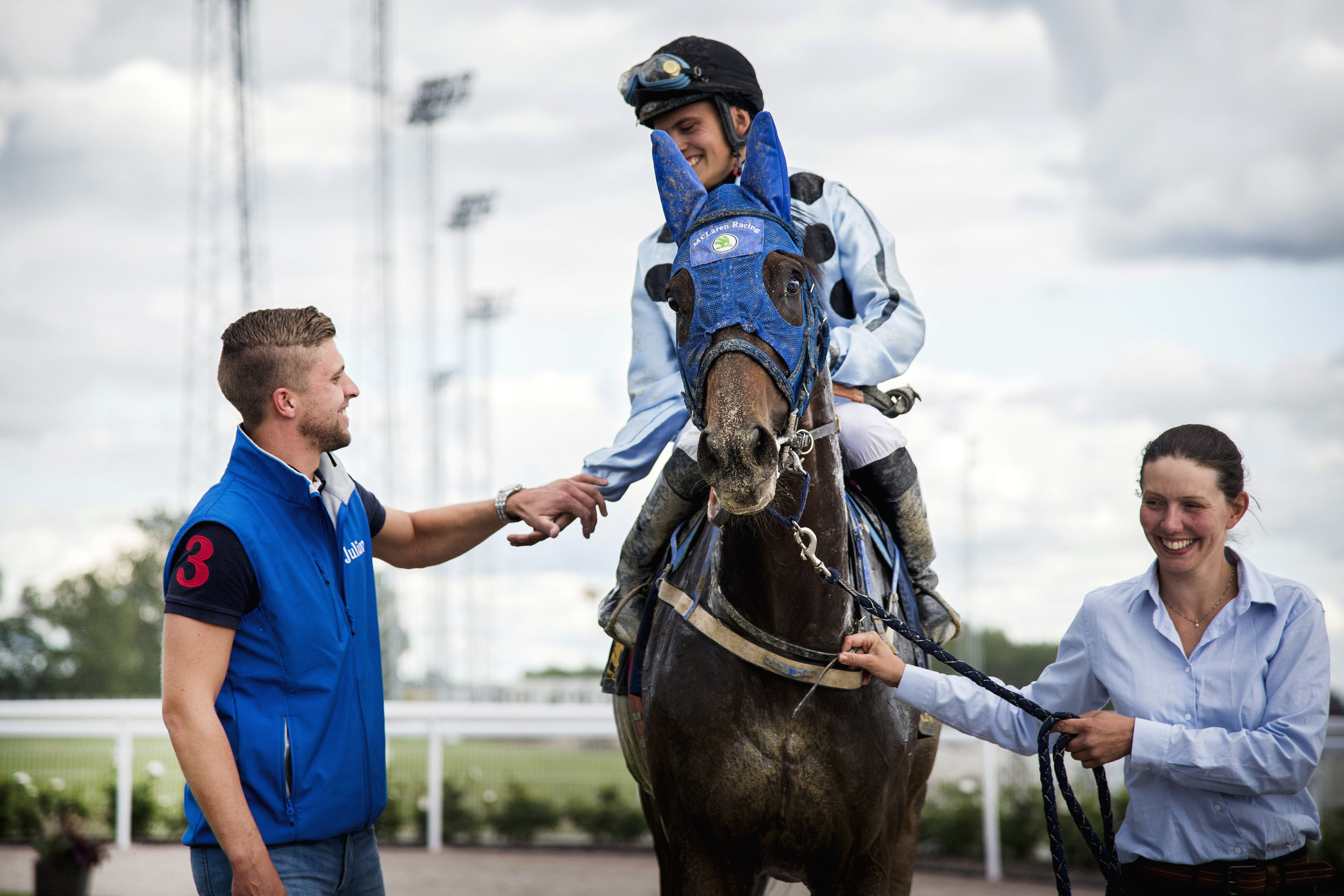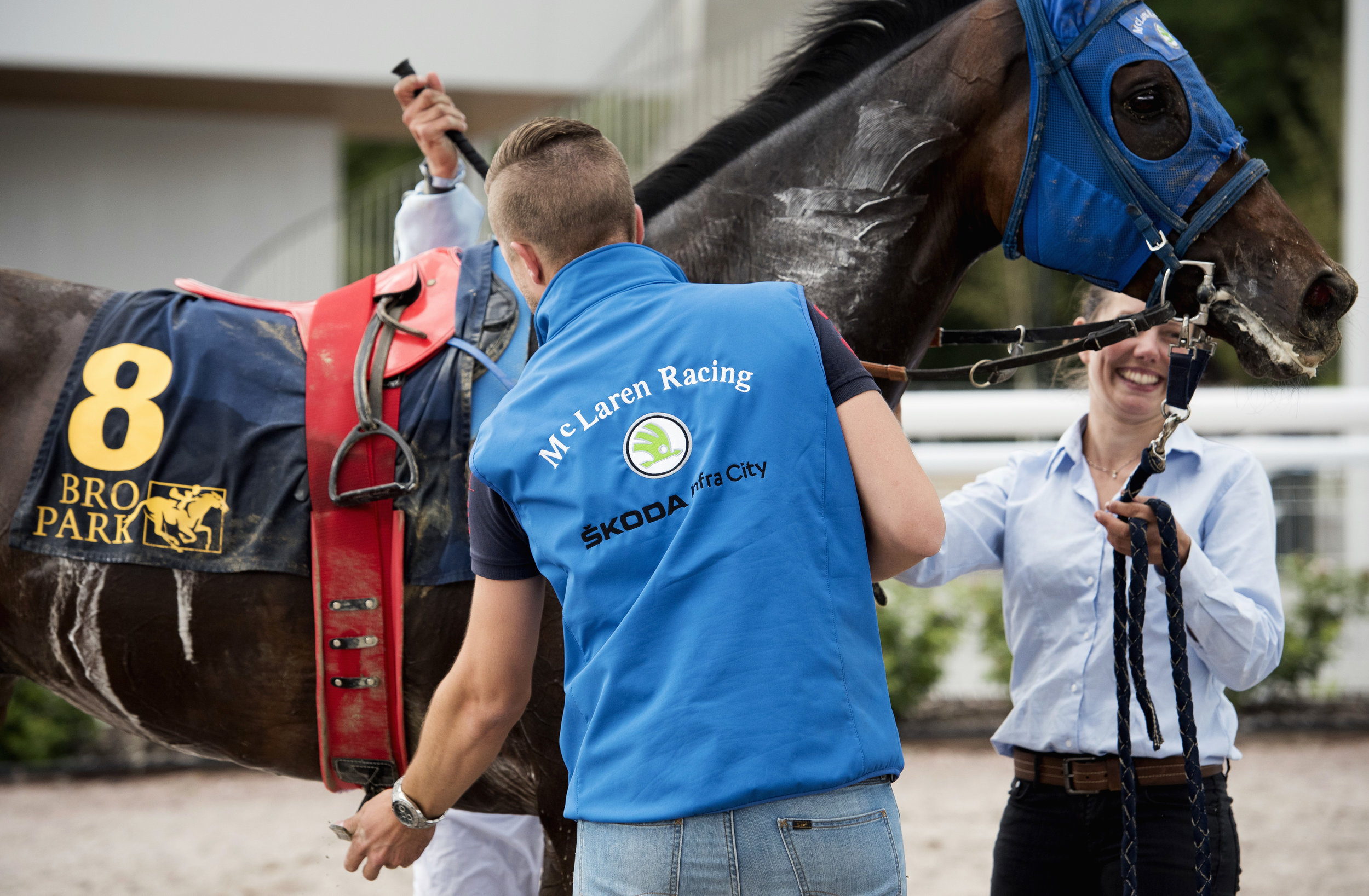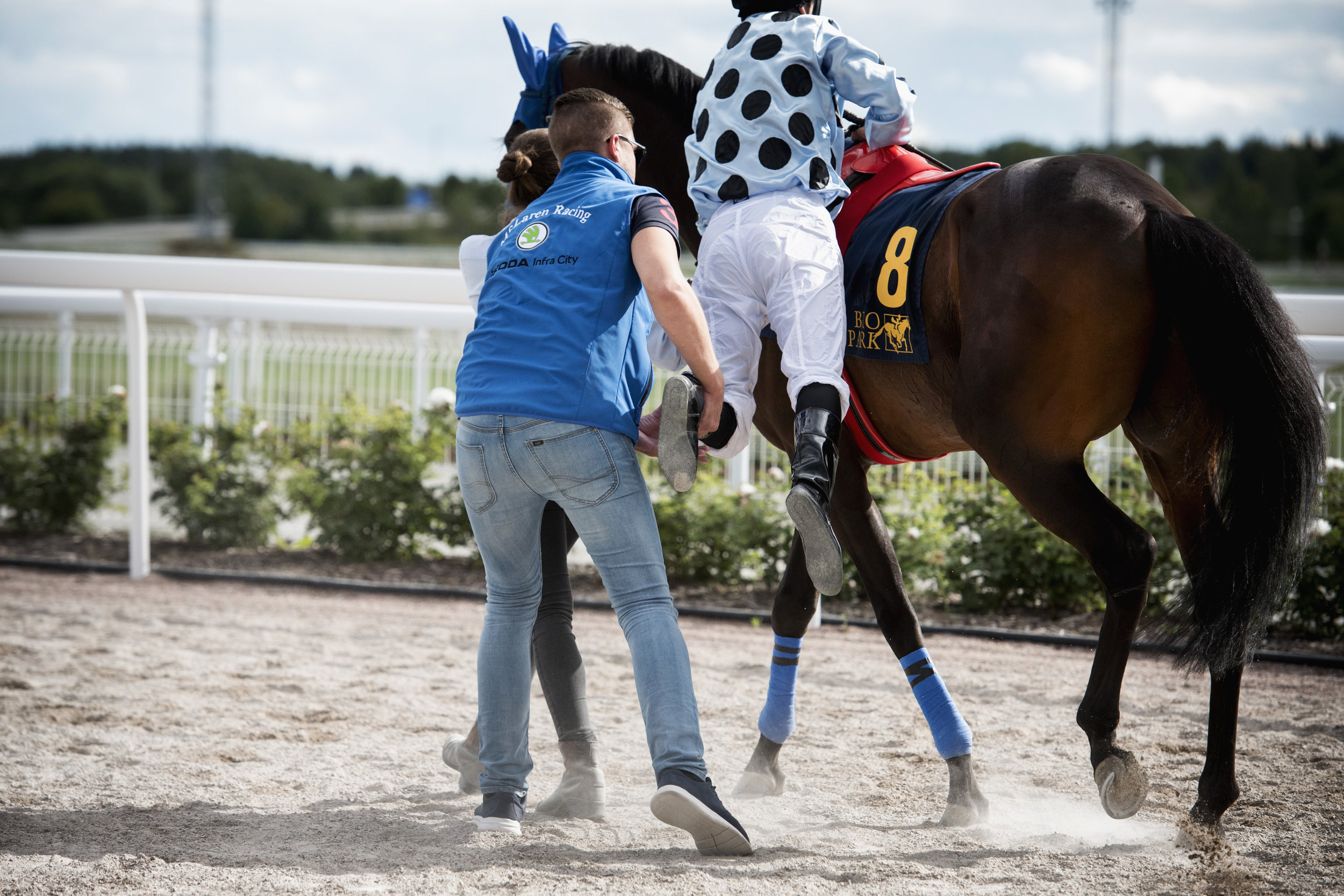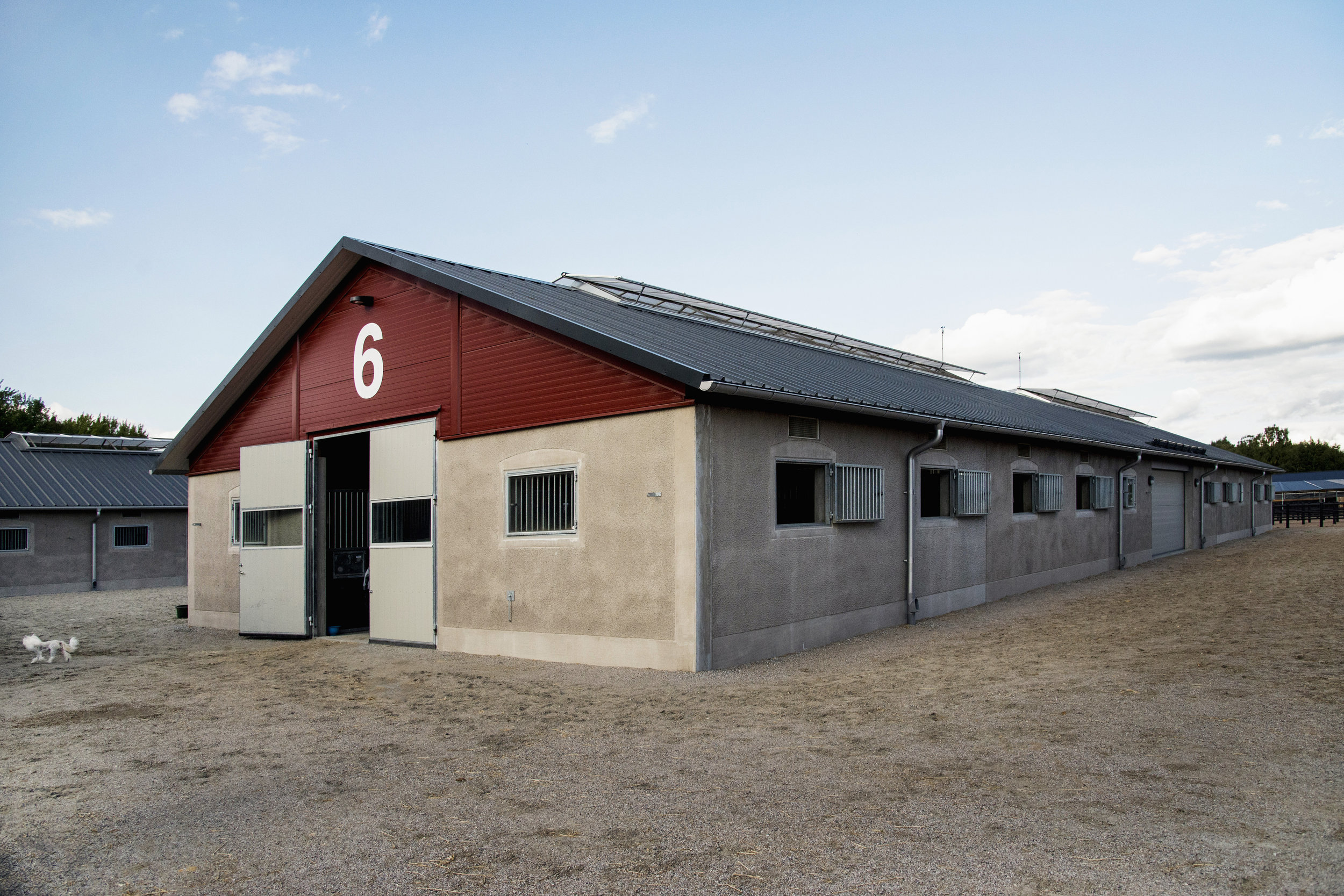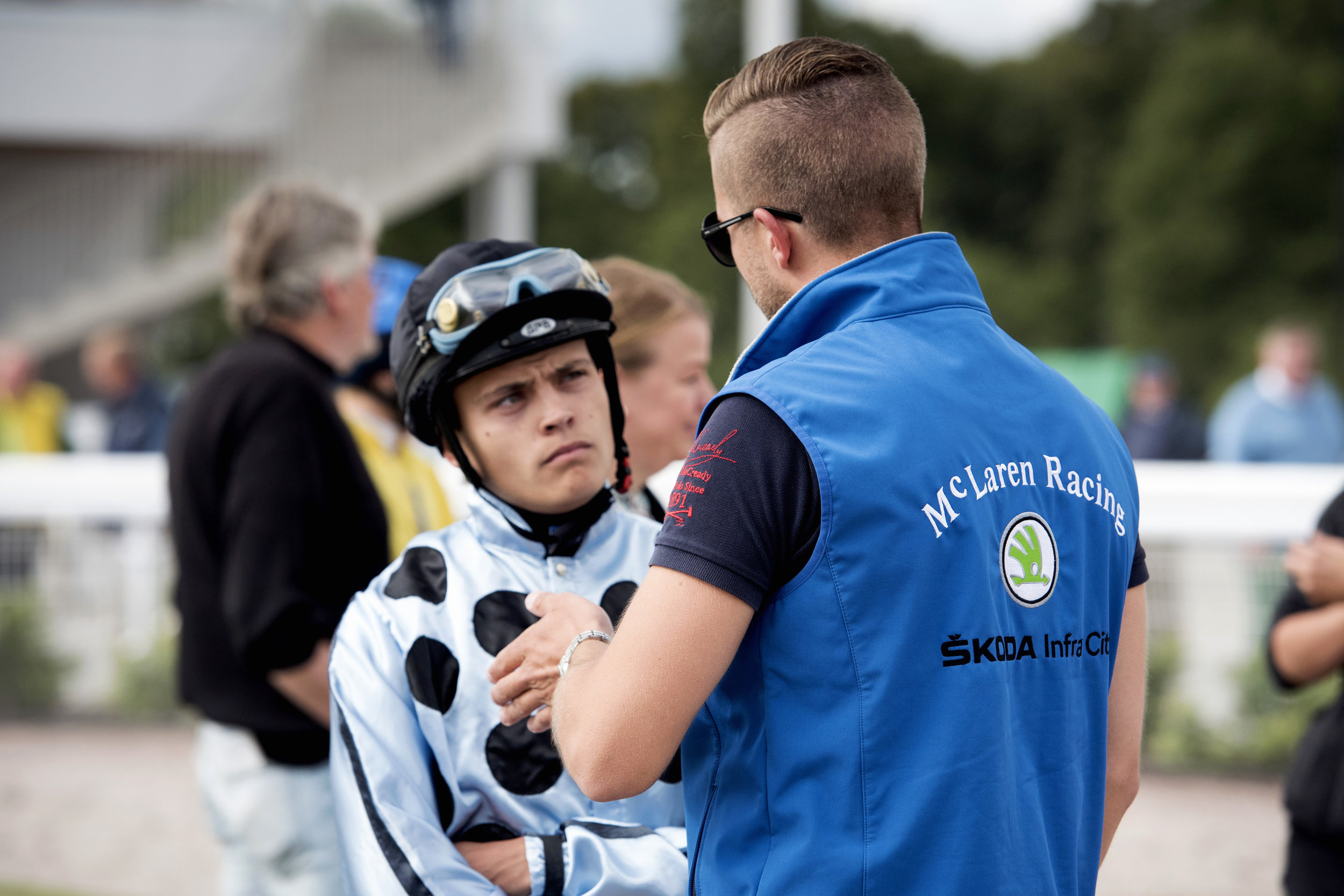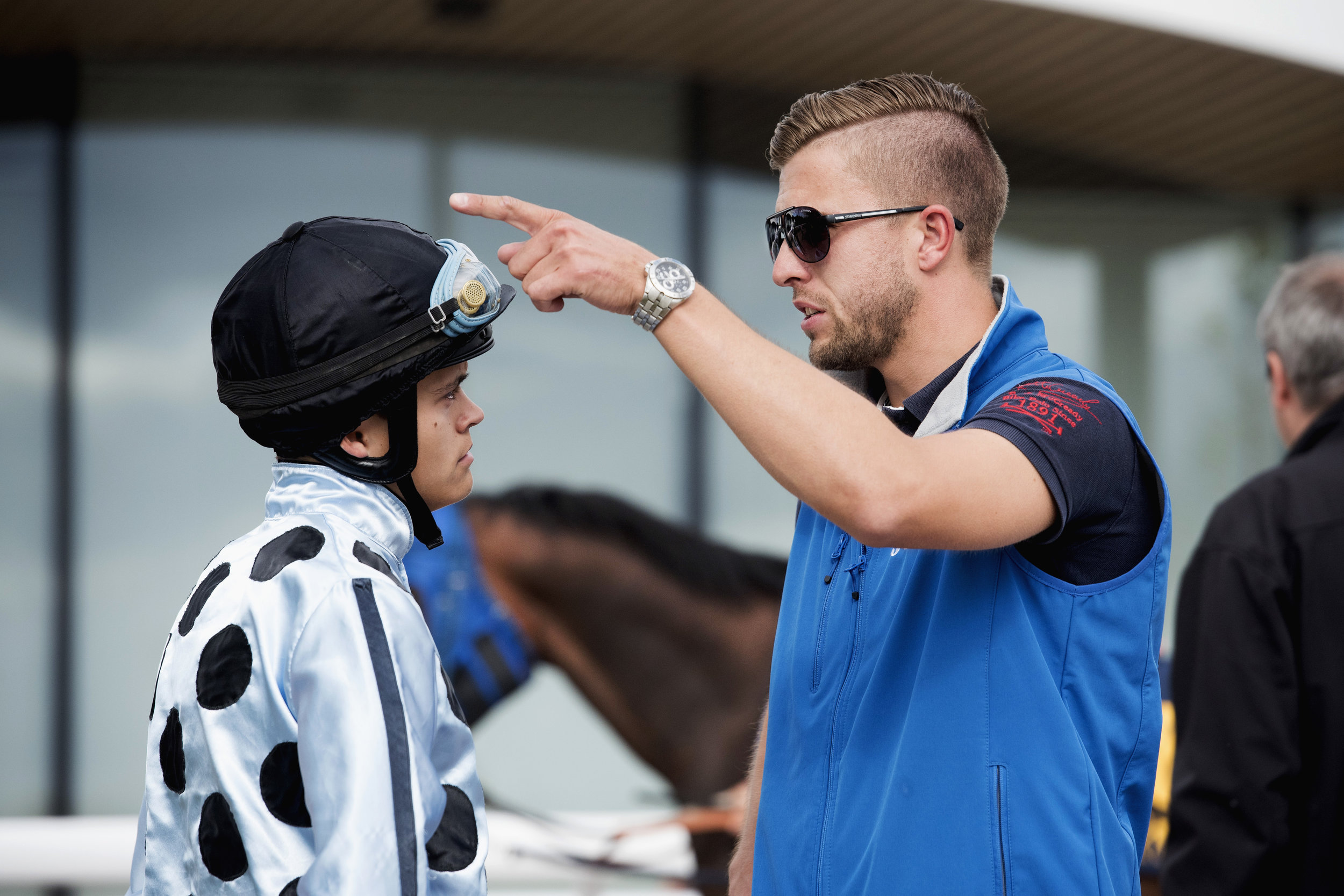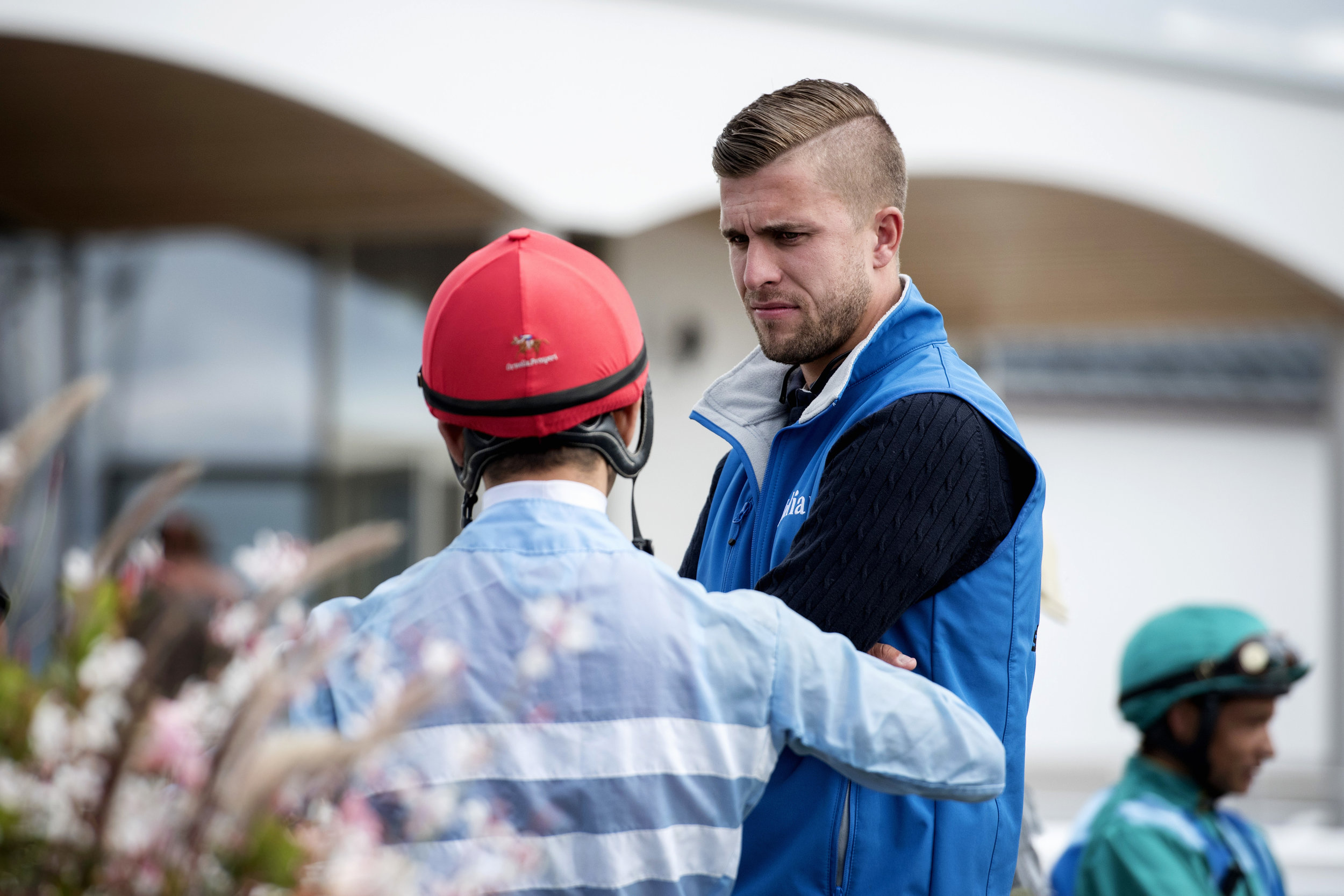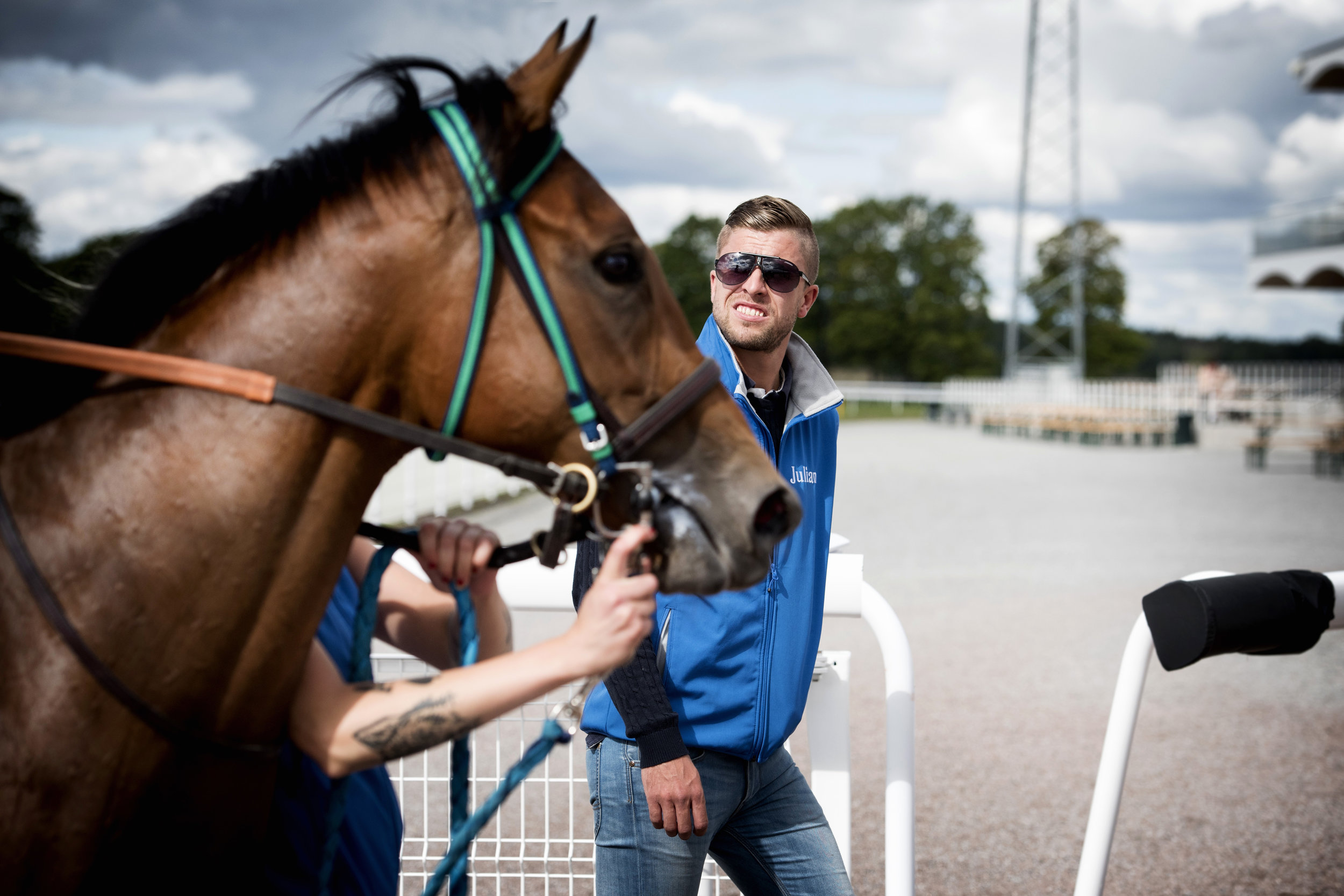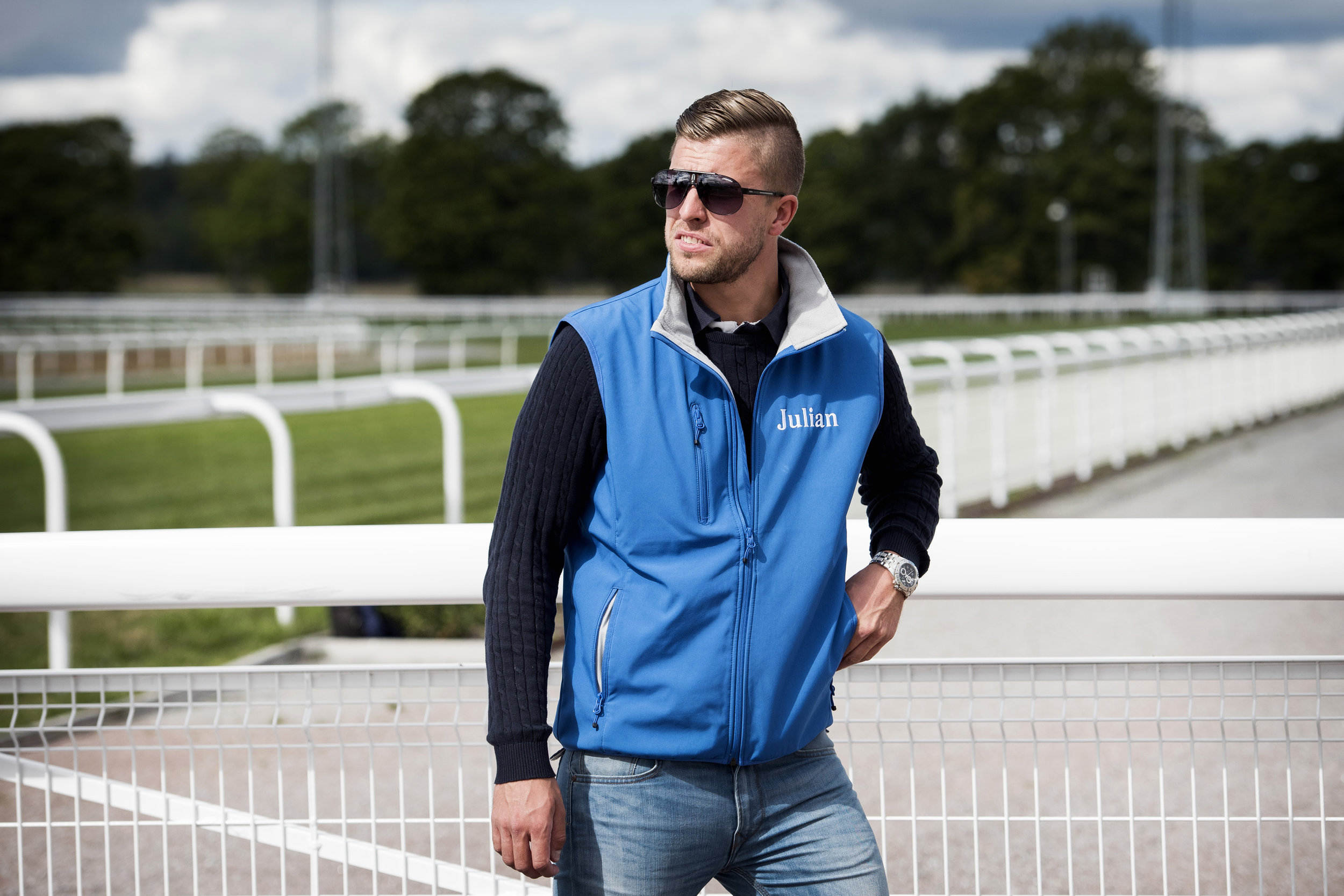Have Horse Will Travel - the international racing opportunities that trainers should be targeting this autumn
Ireland
The Irish Champions Festival takes place at Leopardstown and the Curragh 13th and 14th September respectively. The Curragh boasts the richest day of its year, with a card worth over €2.5m (£2.10m) in total. The highlights are the €600,000 (£503,865) Gp.1 Irish St Leger for three-year-olds and up, the Gp.1 Moyglare Stud Stakes and Gp.1 Vincent O’Brien National Stakes for juveniles and Gp.1 sprint The Flying Five Stakes, each worth €400,000 (£335,900).
The €200,000 (£168,000) Gp.2 Blandford Stakes, the €250,000 (£210,000) Tattersalls Ireland Super Auction Sale Stakes and two Premier Handicaps each worth €150,000 (£126,000) complete the card.
On the opening day at Leopardstown, the nine-race card features five Group races, including the €1.25m (£1.05m) Gp.1 Irish Champion Stakes 2000m (10f), the €400,000 (£335,900) Gp.1 Matron Stakes, €200,000 (£168,000) Gp.2 Solonaway Stakes, €150,000 (£126,000) Juvenile Stakes, €100,000 (£84,000) Gp.3 Tonybet Stakes, the €100,000 (£84,000) Ingabelle Stakes and two Premier Handicaps each carrying €150,000 (£126,000).
In addition to the Irish Champions Festival, the Autumn Racing Weekend will be held at the Curragh 27th and 28th September, which includes the 1400m (7f) €1m (£850,000) Goffs Million, the richest race for two-year-olds in Europe, and the richest handicap in Europe the 3200m (16f) Irish Cesarewitch, worth €500,000 (£425,000). The meeting will also include the Gp.2 Beresford Stakes (€120,000/£101,700) 1600m (8f) for juveniles, celebrating its 150th anniversary, 1200m (6f) Gp.3 Renaissance Stakes (€60,000/£50,800), and 1400m (7f) Gp.3 Weld Park Stakes (€60,000/£50,800).
Irish jumps series
For National Hunt runners, a series of seven 3300m (2m1f) 10-hurdle Irish Stallion Farms EBF Academy Hurdle races will be run in Ireland from October to December. The first is at Cork on 12th October, followed by Fairyhouse 4th October, Punchestown 13th November, Cork 23rd November, Navan 6th December, Naas 15th December and concluding at Leopardstown 29th December.
The races are open to three-year-olds which have not had any previous run under either Rules of Racing or I.N.H.S. Rules other than in Academy Hurdle races. Horses that run in any of the seven races can continue their careers in bumpers, maiden hurdles or Point-to-Points.
Jonathan Mullin, Director of Racing at HRI, explains, “Each of the races offer a Sales Voucher, similar to the IRE incentive for the owners of any eligible Irish-bred horse which wins or is placed either second or third. Each winning owner will receive a €5,000 voucher while the owners of the runner-up and the third-placed horses will each receive €3,000 and €2,000 respectively.”
Additionally, all seven races are part of the Weatherbys National Hunt Fillies Bonus Scheme, so three-year-old Irish-bred fillies that win an Irish EBF Academy Hurdle in 2025 will be awarded an additional €7,500 bonus on top of the race prize money and will still be eligible for the €5,000 scheme bonuses available if subsequently winning a bumper or a steeplechase, but not a maiden hurdle.
Germany
This season, Deutscher Galopp introduced 12 premium handicaps and 15 Premium Racedays, which included seven Group 1 racedays, guaranteeing at least €15,000 (£12,500) in handicaps and maiden races on those days.
The BBAG Auktionsrennen at Mülheim 4th October is worth €52,000 (£43,600), run over 2000m (10f) for three-year-olds offered as yearlings at the 2023 BBAG Sale, while at Krefeld 15th October is the €55,000 (£46,000) Gp.3 Herzog Von Ratibor-Rennen for two-year-olds, over 1700m (8.5f).
The Berlin-Hoppegarten card 3rd October is one of the Premium Racedays and as well as including the 2000m (10f) Gp.3 Preis Der Deutschen Einheit, €55,000 (£46,000) for three-year-olds and up, there is also a 1400m (7f) BBAG Auktionsrennen for three-year-olds offered as yearlings at the 2023 BBAG Sale, and a support card of seven other races from €15,000 (£12,500) to €22,000 (£18,500). Similarly, 19th October at Baden-Baden sees a nine-race card with the guaranteed minimum that also features the Gp.3 €155,000 (£130,000) Preis Der Winterkönigin for two-year-olds over 1600m (8f), and the Gp.3 Herbst Trophy €55,000 (£46,000) over 2400m (12f) for three-year-olds and up.
The 26th October Hannover Premium card includes the €55,000 (£46,000) Gp.3 Herbst-Stutenpreis over 2200m (11f) for three-year-olds and up and two €25,000 (£21,000) juvenile races over 2000m (10f) and, for fillies only, 1400m (7f). The Premium Racedays conclude at Munich 8th November, where the feature is the Gp.1 Grosser Allianz Preis Von Bayern over 2400m (12f) worth €155,000 (£130,000), and another €52,000 (£43,600) BBAG Auktionsrennen, this time for two-year-olds over 1600m (8f) offered as yearlings at the 2034 BBAG Sale.
Sweden
Sweden’s showcase takes place at Bro Park 12th September with a card that includes the Gp.3 Stockholm Cup International (Gp. 3) over 2400m (12f) for three-year-olds and up and worth SEK 1,000,000 (€91,700 / £76,900). The three Listed races on the support card are each worth SEK 550,000 (€50,500 / £42,350) and open to three-year-olds and up, namely the Bro Park Sprint Championship 1200m (6f), the Tattersalls Nickes Minneslöpning 1600m (8f) and the Lanwades Stud Stakes for fillies 1600m (8f).
Later Listed opportunities for three-year-olds up, each worth SEK 400,000 (€36,700 / £30,800), are the 2400m (12f) Skånska Fältrittklubbens Jubileumslöpning and the Peas and Carrots Mile over 1600m (8f) at Jägersro Galopp 5th October, and the 2100m (10.5f) Songline Classic at Bro Park 26th October.
Spain
The highlight of the Spanish season is Champions Day 19th October in Madrid, with a card that includes the Gran Premio Memorial Duque de Toledo over 2400m (12f) for three-year-olds and up, with a value of €50,000 (£42,000) and the Gran Premio Ruban over 1200m (6f) worth €40,000 (£33,500). The €40,000 (£33,500) Gran Criterium for two-year-olds is run over 1600m (8f) 26th October.
British Champions Day
Opening a card that features the British Champions Long Distance Cup (€590,000/£500,000), the British Champions Sprint Stakes ((€590,000/£500,000), the British Champions Fillies and Mares Stakes ((€590,000/£500,000), the Queen Elizabeth II Stakes (€1.36m/£1.15m), the Champion Stakes (€1.53m/£1.3m) and the 1600m (8f) Balmoral Handicap (€295,000/£250,000) is the newly-introduced Two-Year-Olds Conditions Race, worth €295,000 (£250,000), taking the total prize money on the day to €5.13m (£4.35m). Open to two-year-olds, the 1200m (6f) conditions race, like all races at this distance at Ascot, will be run over the straight course.
Turkey
The Jockey Club of Türkiye hosts seven international races in Istanbul at Veliefendi Racetrack, as part of the International Racing Festival run on the first weekend in September. The highlights are the €62,650 (£53,400) 2000m (10f) Gp.2 Anatolia Trophy for three-year-olds up, €190,000 (£162,000) Gp.2 1600m (8f) Topkapi Trophy for three-year-olds up, the €98,700 (£84,150) Gp.3 1200m (6f) Queen Elizabeth II Cup for two-year-olds, €197,500 (£168,400) Gp.3 2400m (12f) Bosphorus Cup for three-year-olds up and the Gp.3 1600m (8f) €142,400 (£121,400) Istanbul Trophy, entries closing 6th August. There is a transport subsidy for international races, $18,000 for round-trip per horse arriving from the continents of America (North and South), Oceania, Africa and Far East countries, €12,000 for round trip per horse arriving from Europe and United Arab Emirates. Any horses scratched from the race after arrival by veterinary report will still receive transportation subsidy. The Gp.3 Malazgirt Trophy for purebred Arabians over 1600m (8f) will also be part of the card.
USA
Kentucky Downs is home to America's only European-style 2000m (10f) all turf racecourse, hosting just seven days racing from 28th August to 10th September, entries closing from 16th August, when emailed expressions of interest must also have arrived for the invitationals. The feature races are the $3.5m (€3m/£2.6m) Gr.3 Nashville Derby Invitational over 2400m (12f) for three-year-olds, the $2.5m (€2.19m/£1.86m) Gr.3 1600m (8f) Mint Millions Invitational and the 2400m (12f) Gr.2 Kentucky Turf Cup Invitational of the same value which is also a "Win and You're In Breeders' Cup Turf" race. Both races are for three-year-olds and up.
Carrying $2m (€1.75m/£1.48m) each are the Gr.3 Kentucky Downs Ladies Turf for fillies and mares three-year-olds and up over 1600m (8f), the Gr.2 Kentucky Downs Ladies Turf Sprint 1200m (6f) for fillies and mares three-year-olds and up, the Gr.1 1200m (6f) Franklin-Simpson Stakes for three-year-olds, the Listed 1600m (8f) Gun Runner for three-year-olds, the Gr.2 1200m (6f) Music City Stakes for three-year-old fillies, the Gr.3 2000m (10f) Kentucky Downs Ladies Marathon Invitational for three-year-olds and up fillies and mares, the Gr.3 2000m (10f) Dueling Grounds Oaks Invitational three-year-old fillies, and the Gr.2 Kentucky Downs Turf Sprint 1200m (6f) for three-year-olds and up which is another of the "Win and You're In Breeders' Cup Turf Sprint Division” races.
Each carrying purses of $1m (€870,000/£738,000) are the Bowling Green Gold Cup Invitational 3200m (16f) for three-year-olds up, the 1600m (8f) Listed Kentucky Downs Juvenile Fillies, the 1200m (6f) Listed Kentucky Downs Juvenile Sprint, the 1600m (8f) Listed Kentucky Downs Juvenile Mile, and the 1200m (6f) Untapable Stakes for two-year-old fillies. The Listed Tapit Stakes over 1600m (8f) for three-year-olds up heads three races worth $500,000 (€437,000/£370,000), alongside the 1600m (8f) NTL Tight Spot Overnight Handicap for three-year-olds up, and the 1600m (8f) Listed One Dreamer for fillies and mares three-year-olds up. Maiden races, already the richest in the world, carry €181,000 (€158,000/£133,300) per race.
“We want to build the Nashville Derby into a race that American and European horsemen alike point to and buy horses for,” says Ron Winchell, co-managing partner of Kentucky Downs with Marc Falcone. “We’ve positioned the Nashville Derby so that it fits into a big-money circuit for three-year-old turf horses.”
The 42nd running of the Breeders’ Cup will be held for a fourth time in Del Mar, California, on the edge of the Pacific Ocean in San Diego “where the turf meets the surf”. Consisting of 14 Grade 1 races with purses and awards totalling more than $31m (€27.11m/£22.97m), the meeting takes place Friday 31 October and Saturday 1st November.
“Our return to Del Mar in back-to-back years marks the continuation of a wonderful collaboration and successful partnership, both with our friends at the track and with the greater San Diego area,” says Drew Fleming, President and CEO of Breeders’ Cup Limited. “We look forward to once again gathering where the turf meets the surf as the world’s best thoroughbreds put on an incredible show.”
“We couldn’t be more excited about hosting back-to-back Breeders’ Cup World Championships and welcoming the very best in international racing back to the town of Del Mar and the greater San Diego area,” said Joe Harper, CEO of the Del Mar Thoroughbred Club. “The Breeders’ Cup represents the pinnacle in world-class racing and the organisation’s willingness to return here again is a testament to the quality of our racing facilities, our idyllic weather, and the warm hospitality shown to our visitors by the local community.”
With 14 championship races held over two days, Future Stars Friday sees the two-year-old championships run for purses upwards of €931,130 (£783,500) and €1.9m (£1.6m). Saturday boasts nine races, culminating with the €6.5m (£5.5m) Gr1 Breeders’ Cup Classic. The “win and you’re in” series consists of 69 of the best races from around the world, from June to October, awarding each winner an automatic and free entry into the Breeders' Cup World Championships.
Bahrain
The Bahrain Turf Series is fairly new to the calendar and has seen just five renewals to date. Running from December through to February, each race carries prize money from €73,750 (£62,850) up to €91,880 (£78,200) with total and the series is designed to attract international runners rated 85-100 to compete against local Bahrain-based horses.
“We believe the time is right to build on the success of the Bahrain Turf Series and expand the international programme to incorporate our season’s premier races,” explains His Highness Shaikh Isa Bin Salman Bin Hamad Al Khalifa, Chairman of the Bahrain Turf Club. “Our most prestigious races, including the Crown Prince’s Cup and the King’s Cup, fall within the Bahrain Turf Series calendar, and are intended to make racing in Bahrain an even more attractive and compelling proposition for international visitors.”
In total, the Series of sprint and middle-distance races comprises of 12 races, six in each division, with each race carrying bonus prizes for the horses accumulating most points in their respective division.
At time of going to press the dates and 2025/26 prize monies were not available, but last year saw significant increases. In December are two 1000m (5f) and two 2000m (10f) races for horses rated 84-100 and a 1200m (6f) and 2000m (10f) race for those rated 80-100.
In January there are two conditions races, over 1000m (5f) and 1800m (9f). February, when the season concludes, sees opportunities for horses rated 80-100 at 1000m (5f), 1200m (6f), 1800m (9f) and 2000m (10f). For those seeking black type, the 2000m (10f) Gr2 Bahrain International Trophy in November for three-year-olds and up is establishing Bahrain as a premier horseracing destination. Run on turf, in 2024 the race was worth €921,858 (£785,315) in total, with €553,115 (£471,178) to the winner.
Entries close 2nd October with supplementary entry stages later in October, but there are three 'Automatic Invitation' races, for the first, second and third from The Royal Bahrain Irish Champions Stakes and the Gp.3 Strensall Stakes at York. The Bahrain Turf Club will provide air tickets for overseas connections and hotel accommodation on a room only basis. Shipment of invited horses will be arranged and paid for by the Bahrain Turf Club.
Australia
The Melbourne Cup Carnival needs no introduction and the Cup itself is only one of 10 Gp.1 racedays during the 22-day season at Flemington. The 3200m (16f) Gr1 Melbourne Cup will be worth A$8.66m (€4.93m / £4.14m) this year, with prize money down to 12th.
During the week there are three €1.8m (£1.6m) weight-for-age Gr1s, the 2000m (10f) Champion Stakes, 1600m (8f) Champions Mile and the 1200m (6f) Champions Sprint. “It is always a great thrill to host international connections who make the journey to Melbourne,” Leigh Jordon, the VRC Executive General Manager, tells us.
More recently the Sydney Everest Carnival held at Royal Randwick and Rosehill Gardens has competed for equal attention, running from 21st September to 9th November, and boasting the world’s richest race on turf, The Everest, over 1200m (6f) in mid-October at Royal Randwick and worth A$20m (€11.3m / £9.5m). The opening day at Royal Randwick features two weight-for-age races, each with a total prize of €615,840 (£520,265) for three-year-olds and up, The 7 Stakes 1600m (8f) and the Gp.2 1100m (5f) Shorts. Randwick later hosts the iconic 1600m (8f) Epsom Handicap, a Gp.1 worth €924,000 (£780,500) and on the Everest supporting card is the €3m (£2.6m) Gp.1 King Charles III Stakes over 1600m (8f).
At Rosehill Gardens, the Hill Stakes over 2000m (10f), and 1800m (9f) Five Diamonds each carry a purse of €1.2m (£1m), with the €6.2m (£5.2m) Golden Eagle over 1500m (7f) the showpiece in November.
Japan
The JRA offers travel incentives for particular overseas horses for Group 1 races and for invited overseas horses for the Japan Cup. The JRA provides air transport costs for the horse and two attendants, the owner, trainer, jockey, and their spouse/partner, and five nights’ accommodation at a JRA designated hotel.
All Japanese Gr.1s are free to enter, or by free invitation, and carry the same declaration fee of €20,200 (£17,500), with significant bonuses from first down to last for the participating winners of designated Gr.1 races globally. The 2400m (12f) Japan Cup is run at Tokyo in November for a purse of €7.3m (£6.3m), Also in November, at Kyoto, the 2200m (11f) Queen Elizabeth II Cup for fillies and mares carries a purse of €1.9m (£1.6m), and The Mile Championship is worth €2.7m (£2.3m). Run on dirt at Chukyo Racecourse, the 1800m (9f) Champions Cup has a total value of €1.7m (£1.5m).
The different incentives available across Europe this summer for those in search of prize money and black type success
Article by Lissa Oliver
In February, the European Pattern Committee (EPC) announced changes to the 2024 European programme of Flat Black-Type races. The EPC sanctioned a total of 826 Black-Type races (838 in 2023), comprising 416 Group races (418 in 2023) and 410 Listed races (420 in 2023). Five Pattern races have been downgraded in 2024, with a further 11 Listed races losing that status.
Jason Morris, Chair of the EPC, explained, “This year will see another contraction in the number of Pattern and Listed races to be staged throughout Europe, with the total number having declined from 852 races in 2022 to 826 in 2024. The European Pattern Committee continues to enforce the most stringent international quality control measures so that the racing and breeding industries can have the utmost confidence in the quality of European Black Type.”
This leaves trainers rethinking traditional routes to Black Type, but at the same time adding new avenues, some of which could lead to some interesting destinations. The EPC approved an application from Denmark to stage a new Black Type race in 2024, with the Golden Mile at Klampenborg over 1600m (8f) for three-years-olds and upwards in May being upgraded to Listed status and carrying a purse of €46,749 (£40,000).
In Ireland, the Salsabil Stakes, a 2000m (10f) race for three-year-old fillies at Navan in April, has been upgraded from Listed to Group 3. Ireland will also stage a new Listed race for three-year-olds over 2400m (12f) at Gowran Park 27th July, the Marble City Stakes worth €46,749 (£40,000).
Flagship races in Poland and Spain
Although no new Listed race applications have been received from emerging racing nations, the EPC noted the strong first Listed edition of the Wielka Warszawska in Poland in 2023. Run over 2600m (13f) at Sluzewiec Racecourse 6th October, for three-year-olds up, it carries a prize of €111,138 (£95,092).
The €85,000 (£72,728) Gran Premio de Madrid in Spain also continues to perform well after being allocated Listed status by the EPC in 2022. It’s run at Madrid over 2500m (12.5f) 22nd June for three-year-olds up.
These were created through the recent Flagship Race scheme by the European and Mediterranean Horseracing Federation (EMHF) and EPC, allowing countries with no Black Type races to apply for a single Flagship race which qualifies for Black Type at a lower rating level. This provides horses with a slightly easier Black Type opportunity, by 2.2kg (5lbs). It also opens up new and often interesting destinations for owners and team.
Morocco
Dr Paull Khan, Secretary-General of the EMHF, explains, “The quality control that is applied to European Black Type is the most stringent in the world. This is good, of course, because everyone recognises the strength of European Group and Listed races. But, on the other hand, countries with less-rich racing industries have long found it hard to establish races which attract the necessary quality of runners to qualify for Black Type. Essentially, for most race types, the average ratings of the first four finishers must be at least 100. Two years ago, the EMHF and EPC devised the Flagship Race scheme, under which countries with no Black Type races can apply for a single Flagship race to be given Black Type based on average ratings of the first four finishers being 5lbs lower than would normally be the case. In simple terms, this means that trainers with horses up to 5lbs shy of normal Listed Race standard stand a reasonable chance of attaining black type when targeted at these races.
“There is a ripple effect which is of benefit to trainers,” Dr Khan points out. ”Other countries are looking to join the party, and in order to attract the necessary quality of entries - particularly from abroad – are ploughing money into their candidate races, and are often offering attractive travel incentives, too. Even if these races have not yet attained their Black Type status, they can still be immensely attractive propositions.”
Top of the list in this respect is Morocco’s Grand Prix de la Sorec. The 10th renewal of the Morocco International meeting will be held on the weekend of 16th and 17th November 2024 at the Casablanca-Anfa racecourse, a dirt track. This prestigious 14-race meeting plays a major role in promoting the Moroccan horseracing industry internationally and includes eight international races worth €1m in total. Sunday is devoted to Purebred Arabians, with over €500,000 in prize money for the four Black Type races.
Saturday is an all-thoroughbred card and of interest here is the feature €123,000 Grand Prix de la Sorec, 2400m (12f) for three-year-olds up. Entry is €600 by 31st October, free to declare. Also on the card is the €71,600 Grand Prix des Eleveurs for three-year-old fillies, over 1750m (8.75f) and the €61,600 Grand Prix des Proprietaires for three-year-old colts, over 1900m (9.5f). Casablanca-Anfa racecourse provides a children's area, entertainment and excellent facilities for visiting owners and trainers. The Cité du Cheval is the 87-hectare training centre on the outskirts of Casablanca, 15 minutes from Casablanca airport and 30 minutes from the racecourse, with 400 boxes, several training tracks, a farriery centre, two restaurants and a housing and catering area for staff.
International runners will have their flights, via the BBA, paid for, or up to €3,000 toward overland transport. Flights, hotel accommodation and all transfers are provided for two owners, the trainer and guest, and the jockey. Hospitality includes lunch at the racecourse on both days and dinner at the Gala Evening on Saturday.
As Dr Khan points out, “Another factor here is the ‘racing tourism’ element. The exotic location of these races provides an additional appeal for owners and trainers who want to soak up the fantastic experience of racing in different cultures.”
Turkey
Turkey and its International festival on the first weekend of September at Veliefendi Racetrack, Istanbul, has for long been a popular destination, particularly for British trainers. Since Brexit, however, the issues involving a Third Country have deterred British runners, leaving the races more open for other European runners. What is instead happening is that two valuable €240,000 (£208,000) Group races have been wholly contested by locally-trained horses, the 2023 Bosphorus Cup attracting just five runners.
The International Bosphorus Cup has this year been downgraded to Group 3, but remains an attractive proposition. Run on turf over 2400m (12f), the €240,000 (£208,000) race is open to three-year-olds up. With the same prize money, the 1600m (8f) International Topkapi Trophy is another Group 3 for three-year-olds up that last year attracted no foreign runners. And the same applies to the fillies only Group 3 International Istanbul Trophy over 1600m (8f), worth €127,000 (£108,645).
Entry for the International meeting is by 2nd August, and a very generous travel subsidy is available to foreign runners, including $18,000 to horses arriving from the continents of America (North and South), Oceania, Africa and Far East countries. Up to €12,000 is available to European and UAE runners.
Sweden and Norway
Sweden’s 500-acre Bro Park has permanent stabling and training facilities, just over 30 minutes from the centre of Stockholm by car and a similar distance from Arlanda Airport. The two main international days are the Stockholm Cup day 15th September and the Stockholm Stora day 9th June, both branded as Super Sunday, during which the local 1000 and 2000 Guineas are also run. Run on turf at Bro Park, the Group 3 Stockholm Stora Pris is run over 1750m (8.75f) and worth €88,817 (£75,992), with a strong supporting card of the €29,309 (£25,000) Listed Bro Park Varsprint over 1200m (6f) and Listed Bloomers’ Vase 1600m (8f) for fillies, carrying the same value.
The Group 3 Stockholm Cup International over 2400m (12f) on turf carries prize money of €124,343 (£106,380) and the three supporting races each offer €58,619 (£50,151); the Listed Tattersalls Nickes Minneslöpning 1600m (8f) run on dirt, the Listed Bro Park Sprint Championship 1200m (6f) on turf, and the Listed Lanwades Stud Stakes 1600m (8f) on turf for fillies. Lanwades Stud also generously offers a free nomination to one of its stallions to the winner. The card also includes a 1400m (7f) two-year-old race on turf worth €36,859 (£31,534), the Svealandlopning. The other mentioned races are for three-year-olds up.
There are also interesting opportunities in Norway on Norsk Derby day 25th August at Oslo, as Director of Racing Liv Kristiansen tells us. ”Oslo offers a great range of both historic and modern hotels and restaurants and makes for a great long weekend with the Derby Day as a finale. The racecourse is just a 15-minute drive from the city centre and is home to most of the racehorses in Norway. On the day, there will be many runners from Denmark and Sweden as well.”
Kristiansen reminds us that it is prohibited to use the whip throughout all of Scandinavia, and in Norway jockeys are not allowed to carry a whip in races for three-year olds and older.
Germany
As an accompaniment to the familiar Pattern races in Germany, Deutscher Galopp Director of Racing Rüdiger Schmanns tells us, ”in general all races are open for foreign trained horses, even handicaps if the horses have a rating in the home country. We have good prize money options in handicaps on the so-called Premium Race Meetings, which are meetings on Sundays or Bank Holidays with at least a Group race on offer on that day. Handicaps of the best category are in total value of €20,000 (£17,103), the second best of €15,000 (£12,827), the third best of €10,000 (£8,551), and the lowest category of €8,000 (£6,841). At the Baden-Baden meetings there is usually one handicap of the day with higher prize money and in Bad Harzburg we have the so-called Super-Handicaps with exceptional prize money in the different categories, but they have an early closing stage at the beginning of April. Average prize money is the highest ever on offer in Germany at €14,200 (£12,143).”
France
Handicaps should also be on the radar in France, where France Galop is contributing heavily in the relaunch of the Quinté+ bet. As a result, the 13 Major Handicaps programme has been remodelled to restore appeal. Four Super Handicaps are now worth €100,000 (£85,519) and eight more have increased in value to €75,000 (£64139), with maximum runners raised to 20. The four €100,000 Super Handicaps cannot be on a Group 1 card and will be run on 7th April at ParisLongchamp 1400m (7f) four-year-olds up; 5th May ParisLongchamp 2000m (10f) four-year-olds up; 4th August Deauville 1600m (8f) three-year-olds up; and 8th September ParisLongchamp 1850m (9f) three-year-olds up.
The dates of the €75,000 Grands Handicaps, with a maximum of 18 runners, are 2nd June Chantilly 2400m (12f) four-year-olds up; 16th June Chantilly 1800m (9f) four-year-olds up; 15th August Deauville 1200m (6f) three-year-olds up; 18th August Deauville 1900m (9.5f) three-year-olds up; 5 October ParisLongchamp 1600m (8f) three-year-olds up; 5th October ParisLongchamp 2500m 12.5f) three-year-olds up; 6th October ParisLongchamp 1300m (6.5f) three-year-olds up; 6th October ParisLongchamp 2000m (10f) three-year-olds up.
Another shake-up comes in the reduction of entry fees for Group 1 races to revitalise entries, introducing a uniform entry price of 0.65% of prize value, with the exception of the Qatar Prix de l’Arc de Triomphe and the Classic races. This lowers the entry fees for 15 Group 1 races, out of a total of 21. Trainers should note that entries have also been brought forward to earlier dates, now four weeks prior to the race.
Ireland
Horse Racing Ireland confirmed a record 395 fixtures for 2024, with an increase of €1.3m (£1.1m) in prize money, creating additional opportunities for horses at all levels. In addition, the final €1.4m (£1.2m) in capital schemes will be paid out for stableyard expansions (€0.3m) and racetrack and industry facility improvements (€1.1m), making it a more attractive proposal for visiting horses and team.
HRI, the Irish EBF and Gowran Park Racecourse have announced a significant boost to the three-year-old programme for middle-distance horses with a new Spring Series of median sires races, culminating in the €200,000 (£170,980) Irish Stallion Farms EBF Gowran Classic, 2000m (10f), the richest race ever held at the County Kilkenny course, on Bank Holiday Monday 3rd June. The race is designed to attract three-year-old middle-distance horses with a median price of no more than €75,000 (£64,121). The winner will receive an automatic free entry into the Dubai Duty Free Irish Derby at the Curragh on 30th June.
The series, with total prize money of €330,000 (£282,125), will consist of six races with a minimum prize-fund of €25,000 (£21,373) per race. The Curragh, Navan and Cork will host four maiden races between them, two for fillies only, and each of these races will be restricted to runners whose sires achieved a median price of not more than €50,000 (£42,747) in 2022.
A median price of €75,000 (£64,121) will apply to runners in The Irish Stallions Farms EBF three-year-old Spring Series Race, with a value of €30,000 (£25,647) at Roscommon on 13 May. The same median price restriction will apply to runners in the €200,000 series Finale.
Racecourse Manager Eddie Scally says, “Gowran Park are really excited to host the inaugural €200,000 Irish Stallion Farms EBF Gowran Classic, the region’s richest Flat race. This race will form part of an action-packed day both on and off the track with live music and a massive family fun day. We hope the Gowran Classic will attract all the top trainers and riders from both Ireland and abroad and see for themselves the warm Kilkenny welcome.”
Irish Stallion Farms EBF already sponsor two successful series for two-year-olds, the auction and median series with 27 races in each and a combined value of nearly €850,000 (£726,712). ”We felt it important to develop a similar series for later developing middle-distance three-year-olds,” says Irish EBF Chairman Joe Foley, ”hence the Spring Series was initiated with the Gowran Classic as its centrepiece. We look forward to seeing this three-year-old series grow and develop and are delighted to support Gowran Park racecourse in particular, who are investing heavily in their facilities.”
Curragh-based trainer Willie McCreery points out, “These races are designed to be linked to the median price of the stallion, which allows everyone to participate. It offers great opportunities for middle-distance horses that needed a bit of time to mature and gives them a big target to aim at. The prize money along with the ‘win and you’re in’ to the Dubai Duty Free Irish Derby is a super incentive.”
The new series consists of the 2000m (10f) €25,000 3yo Median Auction Maiden (Fillies) at the Curragh 6th April; 2000m (10f) €25,000 3yo Median Auction Maiden at Navan 9th April; the 2000m (10f) €25,000 3yo Median Auction Maiden at Navan 27th April; the 2000m (10f) €25,000 3yo Median Auction Maiden (Fillies) at Cork 10th May; the 2000m (10f) €30,000 3yo Median Auction Winners of 1 at Roscommon 30th May; and the Gowran Classic.
If tourism is the agenda, don’t forget Ireland’s only beach race meeting at Laytown, a small seaside resort just 46km (29 miles) from Dublin. The six-race card at Laytown races is held Monday 16th September 2024 with an average of €7,000 (£6,000) to the winner.
Britain
Last year saw the introduction of high value developmental races in Britain, a scheme the BHA has expanded for 2024. From 63, there are now 84 developmental races for the Flat season worth over €3.5m (£3m) in total prize money. The initiative has been made possible by British Stallion Studs (EBF), Juddmonte, Darley and Tattersalls, as well as the BHA Development Fund and is aimed at supporting the domestic breeding industry and encouraging the purchase of young talent in Britain. The races offer enhanced prize money to horses embarking on the early stages of their racing careers.
Richard Wayman, Chief Operating Officer of the BHA, explains, “These races play a hugely important role within the race programme and yet, historically, it is an area where prize money has been behind our international competitors. It is essential that steps are taken to retain quality horses on our shores and with over 80 of these races scheduled for the coming season, this is one initiative that we believe will support this broader aim.”
The 2024 programme began with the Brocklesby Stakes at Doncaster on the opening day of the 2024 Turf season, one of 60 such races for two-year-olds. It comprises 32 Open Novice/Maiden races for two-year-olds, worth a minimum of €46,789 (£40,000); 29 Restricted Novice/Maiden races for two-year-olds, worth a minimum of €35,091 (£30,000); and 23 Open Novice/Maiden races for three-year-olds up, worth a minimum of €46,789 (£40,000).
“British Stallion Studs (EBF) are delighted to be a leading sponsor of the 2024 High Value Developmental Race programme, with a contribution of over €380,172 (£325,000), covering more than 30 races,” says Simon Sweeting, Chairman of British Stallion Studs (EBF). “One of the unique features of our prize money contributions is to encourage racecourses to ‘match-fund’; it is wonderful to see the model we pioneered and embedded, replicated by our fellow sponsors in these races.”
The EBF remains the leading sponsor of European racing and Kerry Murphy, European Breeders Fund CEO, points out, ”The EBF was set up over 40 years ago primarily to tackle the threat of less prize money in two-year-old maidens. With £3.5m total prize money and over 80 high value two-year-old and three-year-old races worth at least £30,000 from the end of March to October, there will be opportunities for all types. It is a great credit to all involved and, of course, all the British stallion farms that contribute to the EBF, and I hope will give owners and purchasers at the yearling sales plenty of incentives.”
The full race list can be seen at:
https://ebfstallions.com/wp-content/uploads/2012/11/2024-Development-Race-List-public.pdf
A 20-minute drive from Stansted Airport, Chelmsford City offers some tempting opportunities for runners from abroad. Not least is the Cardinal Condition Stakes on Saturday 6th April, a Class 2 race that is the last stop of the European Road to The Kentucky Derby, a “win and you’re in”. Run over a mile (1600m) and restricted to three-year-olds, the race is worth £100,000 (€116,953), with the winning horse receiving 30 points, ensuring a place at Churchill Downs. Second through to fifth place receive 12, 9, 6 and 3 points respectively.
“Last year Bold Act won for Charlie Appleby and he has since won a Grade 3 at Keeneland. The runner-up was the Archie Watson-trained Brave Emperor, who had won twice here as a two-year-old and he followed up with a Group 3 win in Germany next time out. Brave Emperor has since added three more Group wins and has just won the Irish Thoroughbred Marketing Cup, a local Group 2, at Doha. We are hopeful of seeing the Cardinal Condition Stakes upgraded to Listed status for next year, given the strength of the race,” says Neil Graham, Chelmsford City Racing Director.
Another imminent upgrade to hope for is the currently Listed Queen Charlotte Stakes over 7f (1400m) for fillies four-year-olds and up, run on Sunday 7th July, with prize money of £100,000 (€116,953). Graham points out, “Past winners include One Thousand Guineas heroine Billesdon Brook, Group 1 winner Highfield Princess and Soft Whisper, a subsequent Group 2 winner in Meydan. It comes a month before the Oak Tree Stakes at Goodwood and is good stepping stone, as Billesdon Brook showed. It is also Britain’s second-most valuable Listed race, behind only the Chesham Stakes at Royal Ascot.”
The third of Chelmsford City’s feature races is the £80,000 (€93,595) Listed Chelmer Fillies Stakes over 6f (1200m) for three-year-old fillies, run Thursday 2nd May. “It’s a good option for the non-stayers and it’s a race that builds on quality year on year. Last year it was won by George Boughey’s Believing, who won a Group 3 at Chantilly on her next start,” says Graham.
“We work hard on promoting our feature races, which includes ensuring a high level of prize money, and we work closely with Adrian Beaumont at the International Racing Bureau to attract foreign runners. We look to offer travel incentives to runners from abroad and we consistently offer Class 6 prize money of £7,650 (€8,949) and £9,650 (€11,288) for Class 5 races, considerably more than any other All-Weather track in Britain.
“We have 125 boxes built to the highest standard located in a quiet and secure yard, with ample room for parking and a fantastic team on hand. Paper or shavings are available.”
“We are in the process of developing a Turf track for 2025 to open up further opportunities,” adds Graham, “and a month ago we were voted one of the Top 10 racecourses in Britain, which is a nice accolade to receive and a reflection of the excellent customer experience we offer.”
Overlooking the parade ring, the exclusive Owners and Trainers Bar provides a complimentary welcome drink and light refreshments. An additional facility for Owners and Trainers adjacent to the parade ring has a fully accessible glass-walled marquee and lawn, and there is also a dedicated viewing area in the main Grandstand, fully wheelchair accessible, for owners with runners on the day.
If it’s culture and tourism of most interest, a day at Ascot is always a highlight. This season, Ascot’s total prize money has risen to €20.4m (£17.5m) including Royal Ascot at €11.6m (£10m), with no Royal meeting race run for less than €128,688 (£110,000). Entry for Royal Ascot Group 1s is 30th April and for the King George VI and Queen Elizabeth Stakes 4th June.
Conditions for the Chesham Stakes (7f 2yo’s), traditionally run on the last day of the fixture, have been altered for 2024 - with horses no longer eligible to qualify via their dam’s performance. The race will return to a stallion only qualification as the race was prior to 2019 (sire must have won over 10f+).
Hannah Parlett, Owners and Trainers Manager, tells us, ”We have received an ROA Gold Standard again for our outstanding owners’ and trainers’ facilities here at Ascot, which include dining rooms overlooking the pre-parade ring in addition to a dedicated bar in the same area, along with a superb track facing facility. There are also two dedicated viewing areas.”
Another ROA Gold Standard winner is Newbury, recognising Newbury’s continued efforts to enhance the on-course experience for owners. The OLBG Owners Club is close to the pre-parade ring beside the owners and trainers entrance. It is exclusively reserved for owners, with a private terrace.
*Euro/Sterling rates Xe.com 07/03/2024
Have horse will travel - incentives to race in 2023
Article by Lissa Oliver
Fitness is one thing, but placing horses in suitable races to provide the best opportunity for them is quite possibly the trickiest part of a trainer’s role. It can be hard enough to search our own racing calendar for suitable races, and yet, delving further into international calendars could well pay dividends, if not in prize money then in adding valuable black type. Despite problems with travel, the racing world grows ever smaller, and it can certainly pay to shop around and look further afield. Many racecourses will offer travel incentives to encourage international participation, and the VIP experience for visiting owners will provide a lasting memory.
France
Close to home and a regular destination for most European trainers, prize money in France rose to €278 million last year, up on 2021 by €30 million (+12%) and on 2019 by €20 million (7.75%). The 2023 France Galop budget includes a €10 million increase in prize money, with an objective to stimulate the number of young horses in training in France.
As a result, 19 races at Parisian racecourses will see their total prize money raised to €50,000, paid out to the first seven finishers. The winner will earn €25,000, increased by 80% for two-year-olds if the winner is eligible for the owner's premium. The total sum of earnings to the winner could be €45,000. The selected 19 races take place throughout the year and include various distances. France Galop describes them as the most sought-after and competitive events for unraced horses in the French programme, with a consistent track record of producing a number of Group horses.
In the French provinces, two races for unraced horses have been selected to be included in this scheme. They are the Prix du Four à Chaux and the Prix Didier Vezia, which will be run in September at Bordeaux. Each race will offer a total prize money of €35,000; and the winner will earn €31,500 if eligible for the owner's premium.
The increase in prize money has also been spread throughout maiden races, and races for unraced horses, across all of France.
The new Arqana Series is also of interest to those racing in France - the sales company offering a series of races worth €1.2m (£1.06m), open only to the yearlings and foals offered at Arqana Sales in 2022 and the two-year-olds offered at the forthcoming Arqana May Breeze Up. The Arqana Series will consist of five races, for two-year-olds and three-year-olds (the latter run in 2024) on a Thursday evening during the prestigious Deauville meeting and on the Saturday of the Prix de l'Arc de Triomphe weekend. Each race of the Arqana Series will reward both owners and vendors.
The juvenile races at Deauville will be run over 1400m (7f) for unraced horses and 1200m (6f) conditions, with a 2000m (10f) race in 2024 for three-year-olds. At ParisLongchamp, the two-year-old race will be a conditions race over 1600m (8f).
Of course, all races in France already carry a lucrative system of owners’ premiums on top of prize money. Two-year-olds and three-year-olds win an additional 80%, four and five-year-olds win an additional 55%, and six-year-olds and up receive an additional 45%. An additional 35% is paid to winners of Gp.1 races, whatever their age.
Germany
Deutsches Derby
Germany is still not yet back to the level of pre-Covid 2019, but significantly more prize money and bonuses were paid out in 2022 than in 2021 [€12.39m (£10.95m)], which will rise to €13m (£11.47m) in 2023. An increase of €2.15m (£1.90m) was recorded in prize money, and the average race value is higher than in previous years at €12,039/£10,651. The Deutsches Derby 2023 will be worth €650,000/£574,967, the Preis der Diana €500,000/£442,290, and the Grosser Preis von Baden worth €400,000/£ 353,985.
At smaller German tracks, the Harzburg meeting, 22–30 July, has significantly increased prize money for 2023, and the showcase handicaps carry €17,500/£15,475. The highlight of the meeting is the BBAG Auction Race worth €37,000/£32,683. "We want to support basic racing in particular," explains Racing Club President Stephan Ahrens, "because the costs of keeping horses have risen enormously. That is why we have increased the race values by up to 25%.”
Scandinavia
Further afield for some, the full potential of Scandinavia has yet to be tapped, particularly the prize money on offer at Bro Park in Sweden. Bro Park covers 500 acres and has permanent stabling and training facilities, able to accommodate a further 100 horses on race days. The facilities provide the best possible environment for horses and those working with them. It is just over 30 minutes from the centre of Stockholm by car and a similar distance from Arlanda Airport.
Bro Park
Foreign raiders might be tempted by Sweden’s major race, the 2400m (12f) Gr3 Stockholm Cup for three-year-olds and up, at Bro Park on Sunday, 17 September—worth €125,825/£111,103. Earlier, on 11 June at Bro Park is the Gp.3 Stockholm Stora Pris, 1750m (8 1/2f) for three-year-olds and up— worth €89,882/£79,357. The Stockholm Cup card includes Sweden's most important two-year-old race, the 1400m (7f) Appel Au Maitre Svealandlöpning—worth €23,108/£20,424—and won by British trainer Archie Watson last year, who completed a double on the day.
On dirt, for three-year-olds and up, Jägersro hosts the 1750m (8 1/2f) Listed Pramms Memorial—worth €89,882/£79,357—21 May; the 2400m (12f) Svensk Derby—worth €223,869/£197,629,—16 July; and the €71,925/£63,509 Zawawi Cup over 1200m (6f), 16 July. Both Bro Park and Jägersro offer plenty of other opportunities at distances of 1200m (6f) up to 2400m (12f) with values ranging from €26,971/£23,809 up to €59,339/£52,386.
In Norway, the 2400m (12f) Norsk Derby at Ovrevoll 20 August has a total value of €108,662/£96,067; and the 2400m (12f) Gp.3 Oslo Cup 15 June is worth €23,721/£20,973 to the winner. On 21 August, the Gp.3 Marit Sveaas Minnelop is run at Ovrevoll over 1800m (9f), carrying a first prize of €66,406/£58,724.
Let’s not forget Denmark, where the Gp.3 Scandinavian Open Championship for three-year-olds and up, over 2400m (12f) at Klampenborg on 27 May, is worth €57,545/£50,903, and a first prize of €31,967/£28,280.
Spain
While there may not be high levels of prize money to chase on a regular basis in Spain, it is worth noting the major prizes in the Spanish calendar. The Listed Gran Premio de Madrid over 2500m (12 1/2f) at the end of June, for three-year-olds and up, is the major summer highlight, worth €68,000/£60,068 (€40,000/£35,330 to the winner; €16,000/£14,132 to the second; €8,000/£7,065 to the third; and €4,000/£3,532 to the fourth).
In 2023, it will be run on Saturday, 24 June and is supported on the card by the Premio Baldoria for three-year-olds and older fillies and mares: over 1600m (8f), worth €15,000/£13,247 to the winner; €6,000/£5,299 to the second; €3,000/£2,649 to the third; and €1,500/£1,324 to the fourth.
August at San Sebastián sees the 1500m (7 1/2f) Premio Santander Cup (Criterium International) for two-year-olds, with prize money of €40,800/£36,018. The €59,500/£52,532 Gran Premio Copa De Oro De San Sebastián, over 2400m for three-year-olds and up, is the meeting highlight, worth €35,000/£30,900 to the winner; in addition to an impressive gold cup, €14,000/£12,360 goes to the second, €7,000/£6,180 to the third and €3,500/£3,090 to the fourth. On the supporting card is the Gran Premio Turismo Gobierno Vasco, 1600m (8f) for three-year-olds and up with a total prize of €40,800/£36,018.
On Sunday, 15 October, the highlight of the Spanish season will be Champions Day, with a card that includes the Gran Premio Memorial Duque de Toledo over 2400m (12f) for three-year-olds and up, with a value of €68,000/£60,068 (€40,000/£35,330 to the winner, €16,000/£14,132 to the second, €8,000/£7,065 to the third and €4,000/£3,532 to the fourth). Also run on the day is the Gran Premio Ruban over 1200m (6f) worth €40,800/£36,018, with the winner taking home €24,000/£21,191, down to €2,400/£2,119 for fourth. A strong supporting card boasts lucrative added premiums of €5,000 for Spanish-breds.
Belgium
There are also opportunities for an average rated horse closer to home for some, in Belgium. As in Spain, the prize money might not be eye-catching, but neither is the competitiveness in comparison to similar races at home. The showpiece is the Prix Prince Rose, a National Listed Race over 2100m (10 1/2f) run at Ostend on Monday, 7 August with total prize money of €12,800/£11,304, with €8,000/£7,065 to the winner. The Prix Prince Rose is open to three-year-olds and older who have never been placed in the first five of a Pattern race.
Ostend also hosts three interesting conditions races in July and August: the Miler Cup, 1600m (8f); the Prijs Half Oogst and BFG Galop, 1800m (9f); and the Prijs BFG and Nymphenburger, 2200m (11f)—each with a total prize money of €8,000/£7,065, with €5,000/£4,416 for the winner. They are for four-year-olds and older without a handicap value or a value equal or lower than 30kg (66 lbs). Penalties for prize money received for wins and places since 1 July 2023 are 1kg per €1,000. There is also the UAE Sprint Cup Handicap over 1000m (5f) in August for four-year-olds and older with a handicap value equal or lower than 30kg (66 lbs). See the complete list of races and conditions here: www.bgalopf.be/Meetings.htm
Britain
In Britain, the BHA, Darley and Juddmonte have come together to sponsor a high-value developmental races series of 60 races, also supported in funding by host racecourses, offering increased prize money to horses at the start of their career. As with the French developmental programme, the hope is that they will be retained to race in Britain going forward. The BHA hopes to expand on the idea of increasing the values of Flat maidens and novice races in 2024 and long-term.
There will be 20 two-year-old restricted maiden and novice races worth €33,975/£30,000, supported by Juddmonte; 21 two-year-old open maiden and novice races worth €33,975/£30,000, supported by the BHA Development Fund; and 22 three-year-old and up open maiden and novice races worth €33,975–€56,626 (£30,000–£50,000), supported by Darley and the BHA Development Fund. The €56,626/£50,000 races will be run over longer distances to support middle-distance and staying horses.
Elsewhere in Britain, Newbury, having been infamously boycotted by trainers for one of its flat races last year, will see a 16% prize money increase this year, taking overall levels at the track to just over €6.79m/£6m. Newbury will host six novice and maiden races during the Flat season with prize money of €33,975 up to €56,626 (£30,000–£50,000).
The Racing League also returns for 2023, in which seven teams compete in 42 races over six meetings for over €2.2m/£2m prize money. The meetings for 2023 are Yarmouth 27 July, Chepstow 10 August, Windsor 17 August, Newcastle 31 August, Wolverhampton 7 September and Southwell 13 September. All races are handicaps with a range of ratings bands and distances, with normal BHA distribution for race prize money.
As with Arqana, British racing is boosted by the sponsorship of sales company Tattersalls, targeting yearlings purchased at the Tattersalls Somerville Yearling Sale, who will be eligible for the 1200m (6f) €112,826/£100,000 Tattersalls Somerville Auction Stakes run at Newmarket 26 August, as well as the 1200m (6f) €169,242/£150,000 Tattersalls October Auction Stakes, Newmarket 5 October.
Charlie Appleby-trained Regal Honour broke his maiden in the 2022 Stephen Rowley Remembered Novice Stakes at Newmarket to collect the 312th £20,000 Tattersalls October Book 1 Bonus.
The Goffs UK Harry Beeby Premier Yearling Stakes, 1200m (6f) on 24 August at York carries a guaranteed minimum value of €394,092/£350,000, for two-years-olds sold at the 2022 Doncaster Premier Yearling Sale.
Tattersalls also offer the €22,684/£20,000 Tattersalls October Book 1 Bonus Scheme for 2023. Participating owners will receive a €22,684/£20,000 bonus if their 2022 October Book 1 purchase wins a Class 2, 3 or 4 two-year-old maiden or novice race in Britain between 1 April and 11 November 2023, or any 'Open' two-year-old maiden run in Ireland between 25 March and 5 November 2023. The cost to enter the €22,684/£20,000 Tattersalls October ‘Book 1 Bonus’ Scheme is €1,928/£1,700, and there are over 300 qualifying British and Irish two-year-old maiden and novice races. All yearlings sold, bought in or failing to meet their reserve at Book 1 of the 2022 Tattersalls October Yearling Sale are eligible.
Ireland
Tattersalls are also major sponsors in Ireland, with the Tattersalls Ireland Super Auction Sale Stakes of €300,000/£265,889, worth €150,000/£132,942 to the winner and prize money of at least €5,000/£4,431 down to 10th. Over 1200m (6f) at the Curragh, it is of course limited to those yearlings sold at the Tattersalls Ireland September Yearling Sale and the Tattersalls Ireland Sapphire Sale in November 2022.
Tattersalls also continues to support the first two Irish Classics and Gp.1 Tattersalls Gold, as well as enhanced owners’ and trainers’ facilities at the Curragh. The Irish 1000 Guineas and Irish 2000 Guineas will each have prize money of €500,000/£443,081, while the Tattersalls Gold Cup will increase in value to €450,000/£398,754.
Goffs also continue to be major sponsors in Ireland, supporting premier National Hunt and Flat races. The Goffs Sportsman Challenge Day at Naas, 14 September 2023, will be a mid-week all juvenile card featuring the 1200m (6f) €100,000/£88,653 Goffs Sportsman’s Challenge, a two-year-old race exclusive to yearlings purchased at the Goffs Sportsman’s Sale. Prize money also goes to the first 10 finishers.
Europe’s richest two-year-old race, the 1400m (7f) Goffs Million, run at the Curragh 23 September 2023, is for graduates of the Goffs Orby Sale (2022) and is worth €500,000/£443,081 to the winner, down to €10,000/£8,869 for 10th.
Horse Racing Ireland (HRI) saw a number of restorations to prize money levels last year and an increase in funding for the IRE Incentive Scheme for breeders, which grew from €1.1m (£0.97m) paid out in 2021 as vouchers to be spent on Irish-bred horses at Irish sales, to €1.3m (£1.14m) last year. It will again provide €1.3m (£1.14m) in vouchers for 2023.
HRI’s commitment to ensuring the quality of racing is also extended to grassroots level, with a targeted increase of €1.7m (£1.5m) to prize money levels, bringing 2023 to €68.6m (+2.5%) (£60.58m).
“Prize money is a key enabler in building and maintaining the number of quality horses in training in Ireland,” says Suzanne Eade, chief executive of HRI. “Approximately 70% of horses competing [in Ireland] receive some prize money, so it is important that we prioritise its growth…in order to sustain the significant rural jobs created by the industry.”
European Breeders’ Fund
Throughout Europe, the European Breeders Fund (EBF), with national representation in Britain, Ireland, France, Germany, Italy and Switzerland, continues to be one of the largest sponsors of races. Only the progeny of EBF registered stallions and horses nominated to the EBF can enter these races, but of course they are free to run in any EBF race throughout Europe.
The European Breeders’ Fund celebrates its 40 th year of operation in 2023 and in that time has contributed over €130m to prize money throughout Europe. The emphasis is on the two-year-old programme and fillies races, and there are valuable opportunities to be found. The EBF regularly reviews where the funds are best directed and is a vital support to both racing and bloodstock industries.
Highlights of the EBF support in 2023:
Irish EBF Ballyhane Stakes €200,000 minimum at Naas, August
British EBF 2yo series £100,000 finals at Goodwood and York, September and October
Criterium FEE €130,000 Deauville, August
Italy is recovering from difficult times and this season there will be four EBF-sponsored races with an added €2,000/£1,766 to the winner if EBF qualified.
In France, the EBF (FEE) will pay out over €1m into prize money, with over €200,000 in premiums for fillies Listed Races, and over €500,000 for two and three-year-old maidens, debutants and conditions races in both Paris and the regions.
The British EBF will in 2023 invest around €2.27m (£2m) for both Flat and National Hunt and the Irish EBF current investment has increased from €2.6m (£2.25m) to €2.7m (£2.38m), making Irish Stallion Farms EBF the largest sponsor of racing in Ireland. This year all Listed Fillies races in Ireland will be sponsored by Irish EBF and will run for a minimum of €50,000/£44,000 and all other Listed races will run for a minimum of €40,000/£35,000. Highlights include the 26-race Median Sires Series, each worth a minimum €25,000/£22,000, for horses by a sire with a median fee of €75,000/£66,045 or less. The €200,000/£177,506 Irish EBF Ballyhane Stakes has the same conditions and is the showcase, run over 1000m (5f) at Naas 7 August. The 24-race Irish EBF Auction Series for two-year-olds worth a minimum €20,000/£17,750 each has two finals, worth €120,000/£10,5672. Horses must have been bought at auction for €72,000/£63,403 or less.
*Euros converted to sterling at XE rate 03/03/2023
Profile: Julian McLaren
Published in European Trainer - October - December 2017, issue 59
Click here to order this back issue!
The rising star in Scandinavian racing
Julian McLaren was suddenly thrown into a trainer’s role less than two years ago and quickly started to make a name for himself on the Scandinavian racecourses. European Trainer caught up with the young Swedish trainer to discuss racing in Scandinavia, the new Stockholm racecourse, and how he overcome his fear of riding.
Growing up around racehorses, Julian McLaren always knew that he wanted to devote his life to horse racing. Having a trainer as a father and a racing administrator as a mother, the Swede has been a part of the Scandinavian racing community since before he could walk. “My dad, Alex McLaren, came to Sweden from Scotland in 1979 and started training near Stockholm shortly after,” Julian McLaren explains. “I grew up on the farm where he trained, and later we moved closer to the city and kept the horses at Täby Galopp.”
As a teenager, he spent most of his free time at the track, and once he finished school, his involvement in the racing industry became more serious. Valet, jockey’s agent, starting stall handler, and stable hand are only a few of the many roles Julian McLaren, now 30, has experienced.

